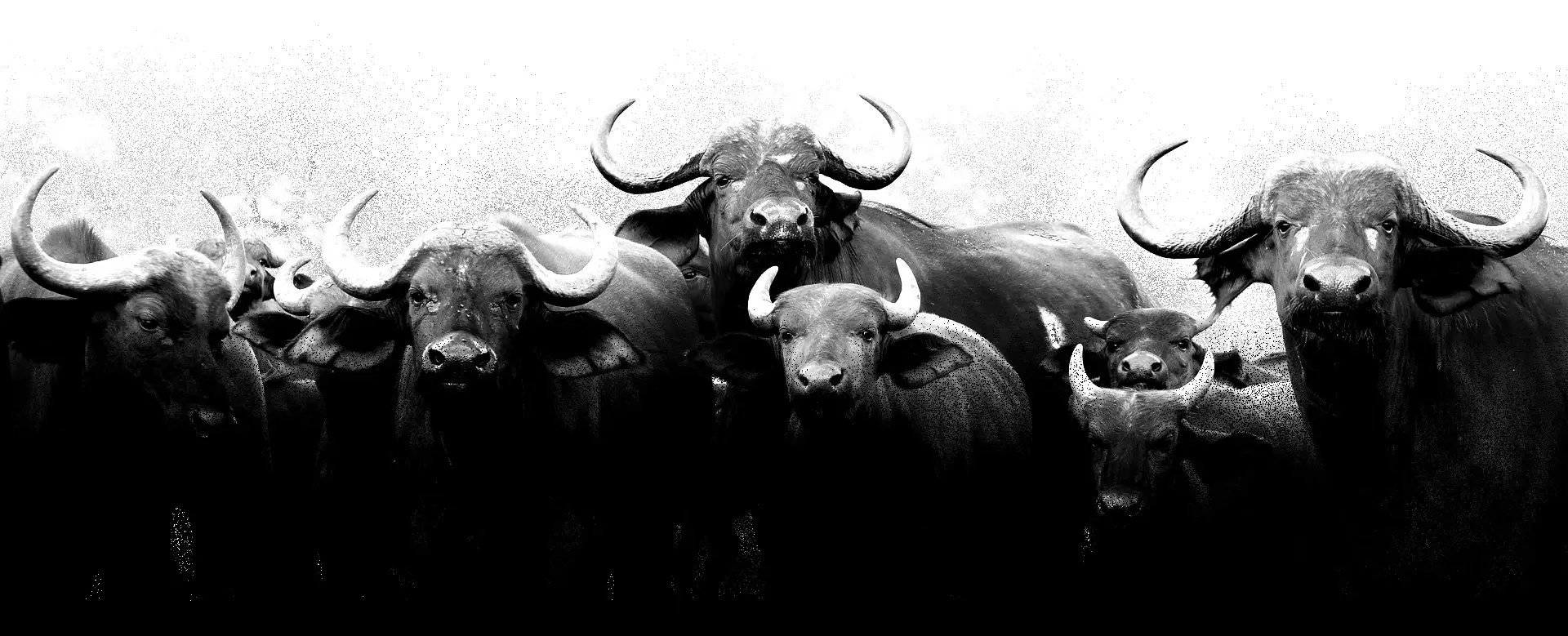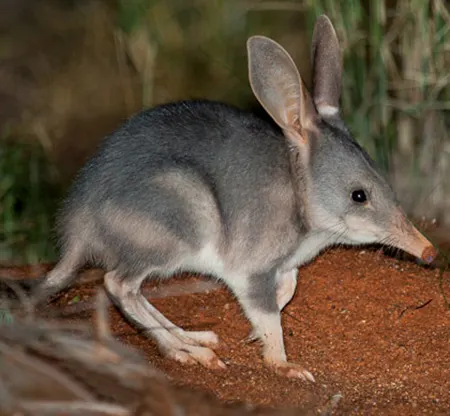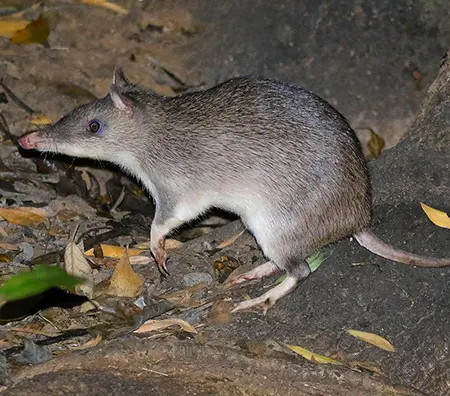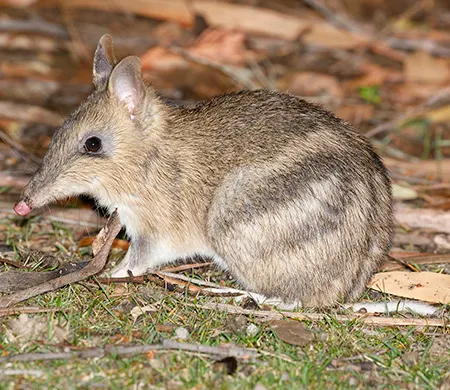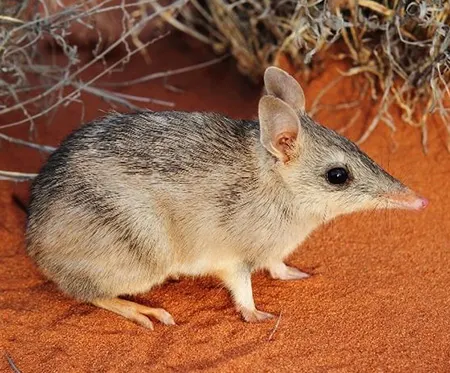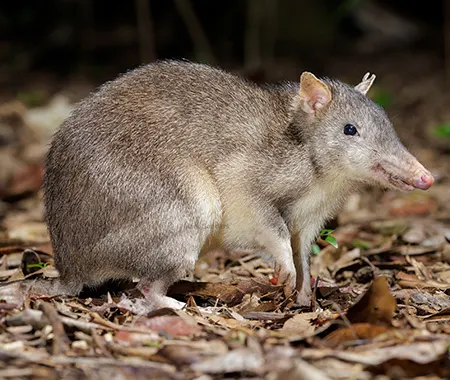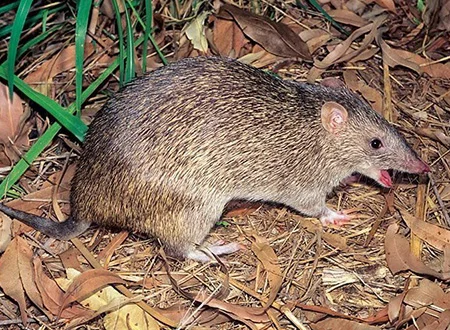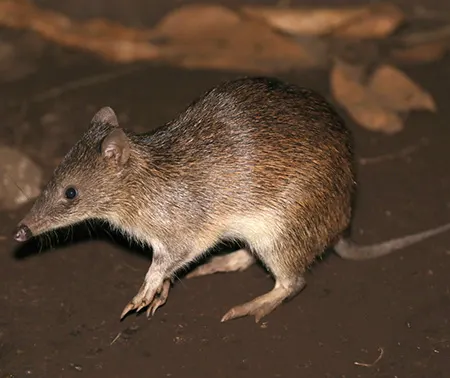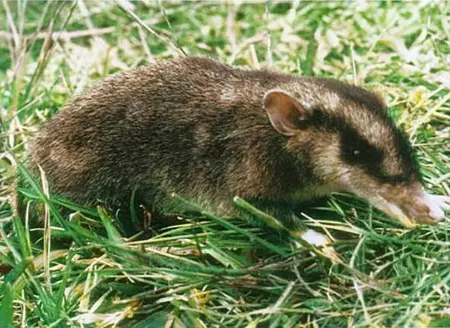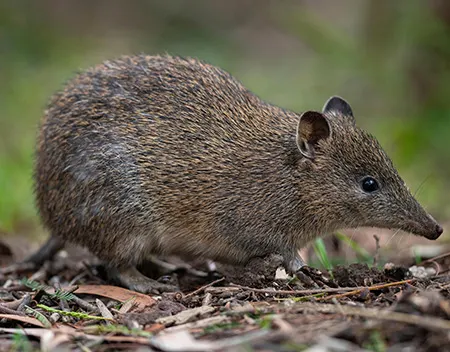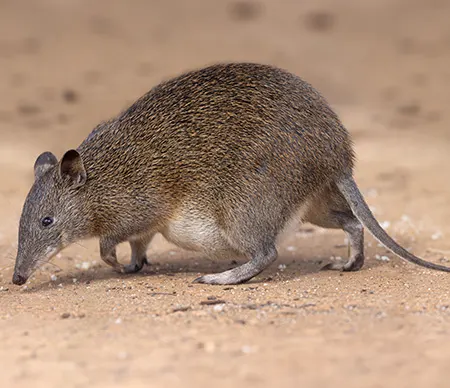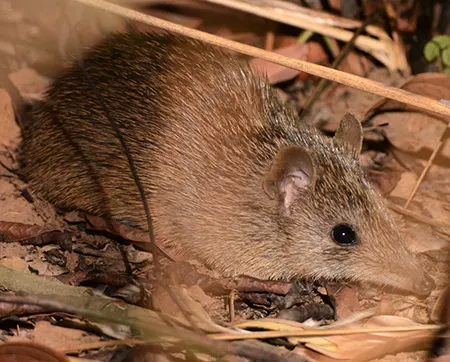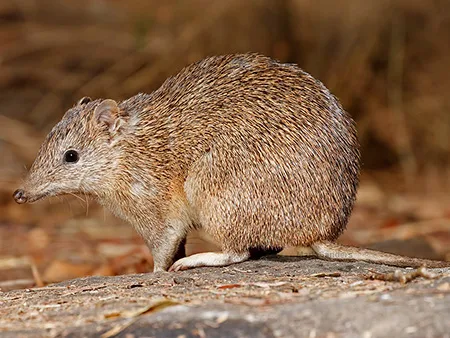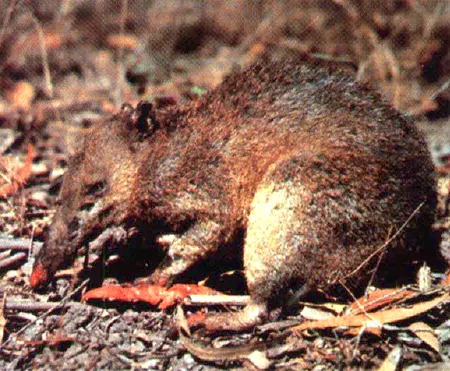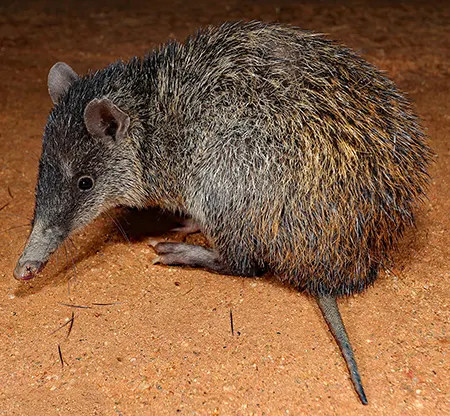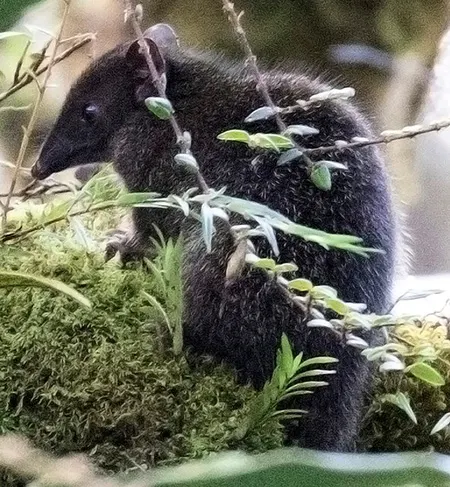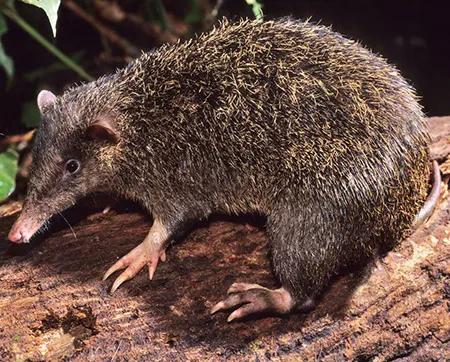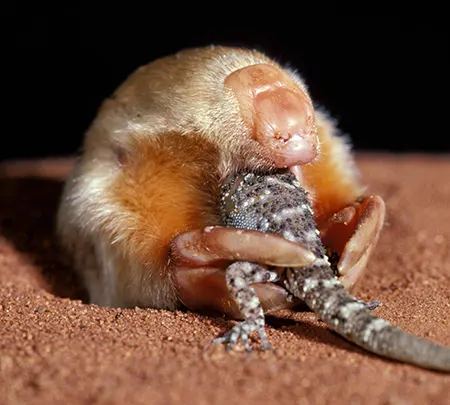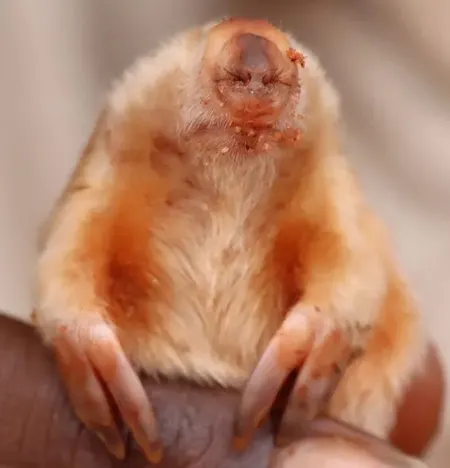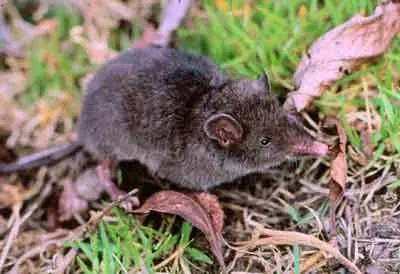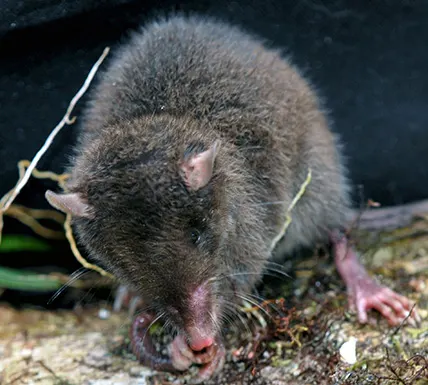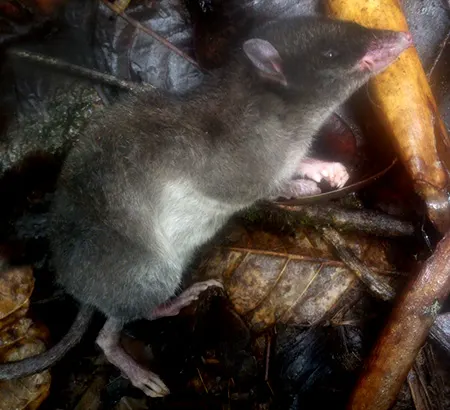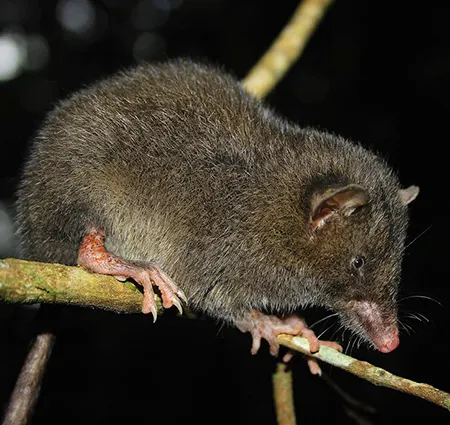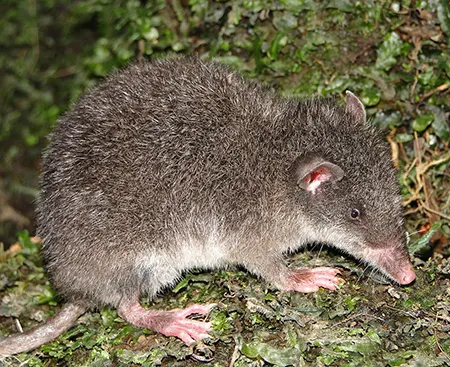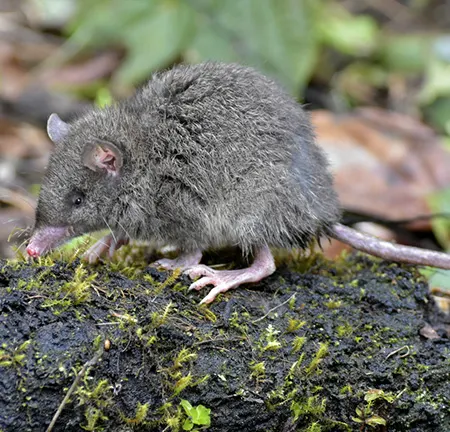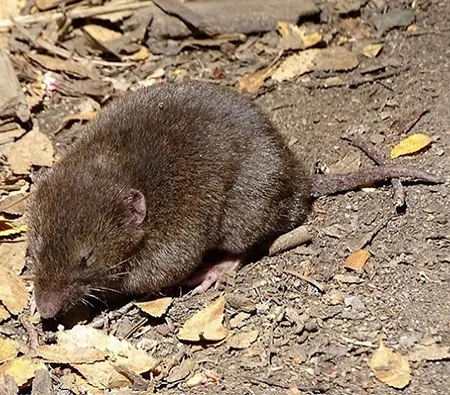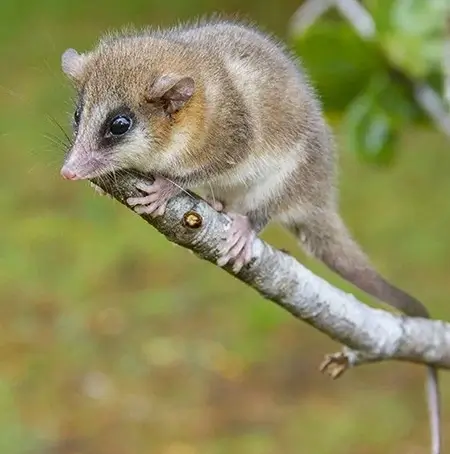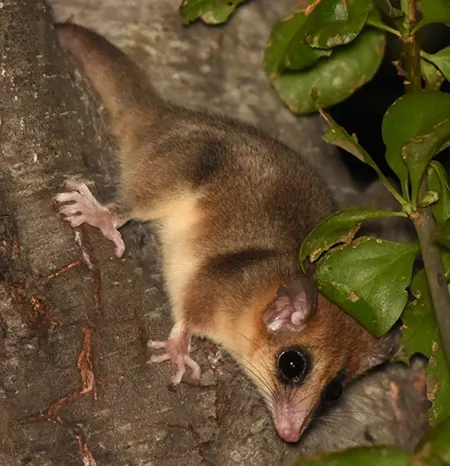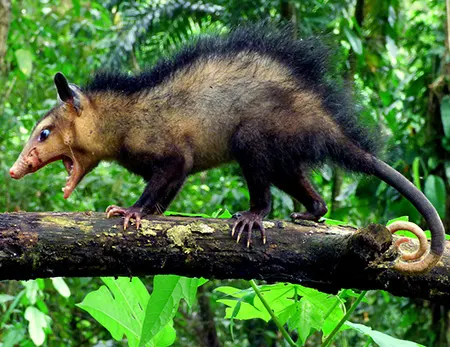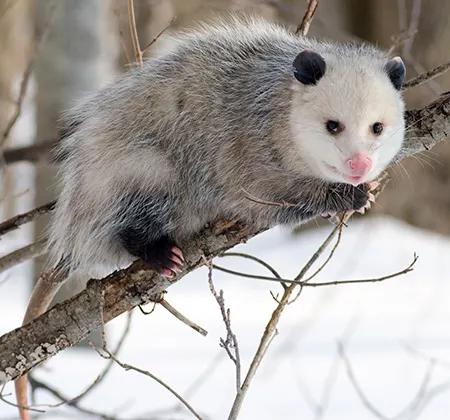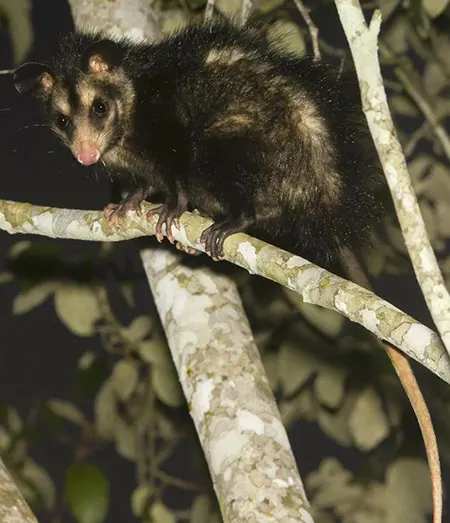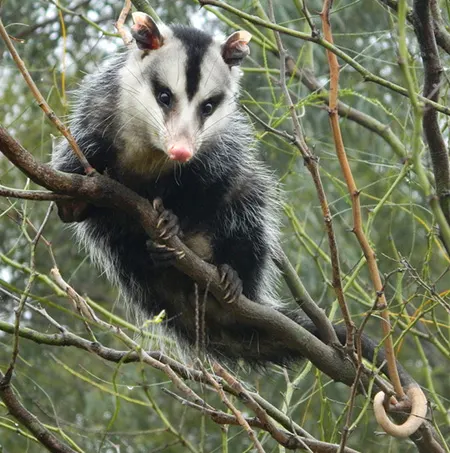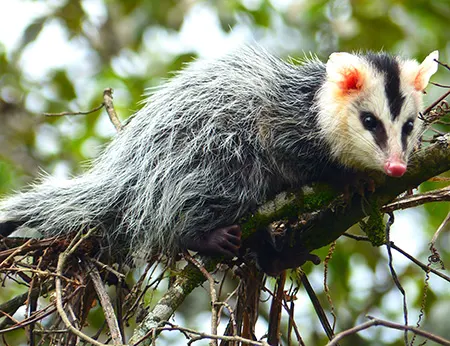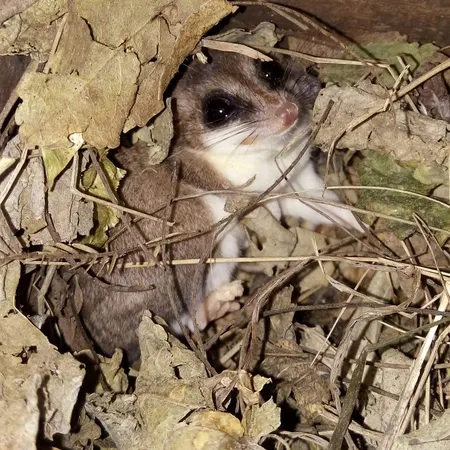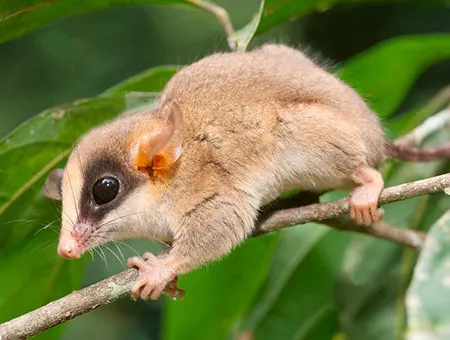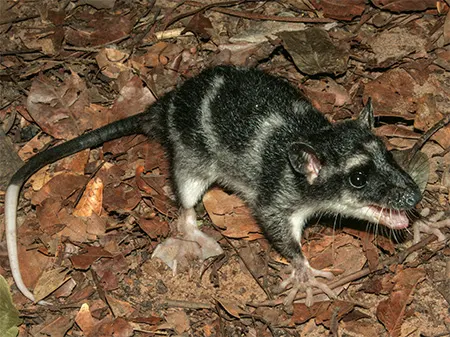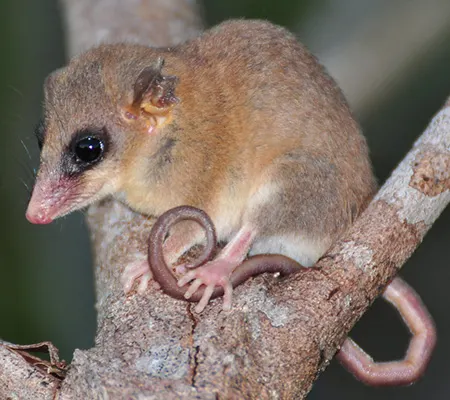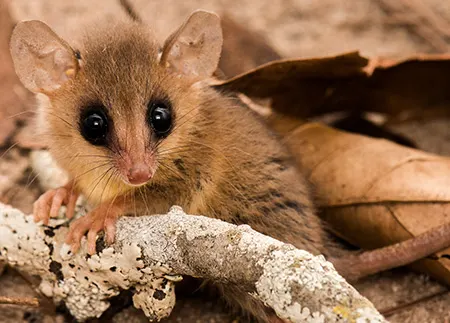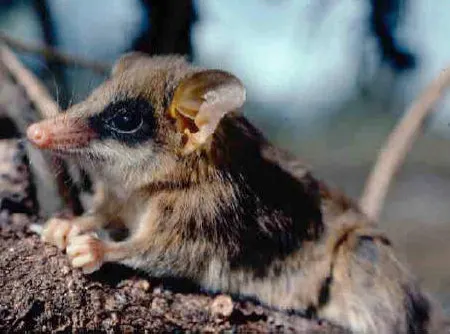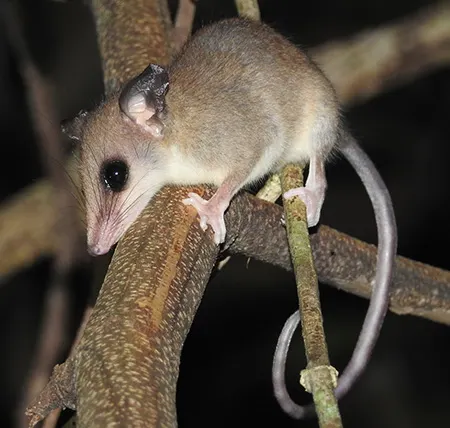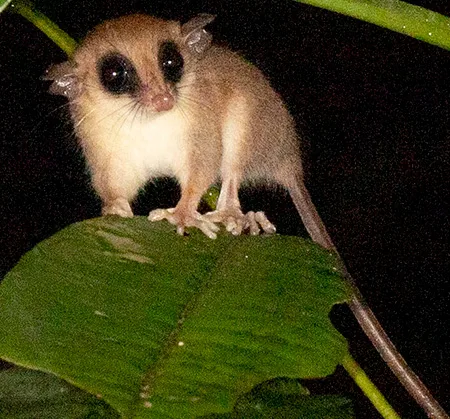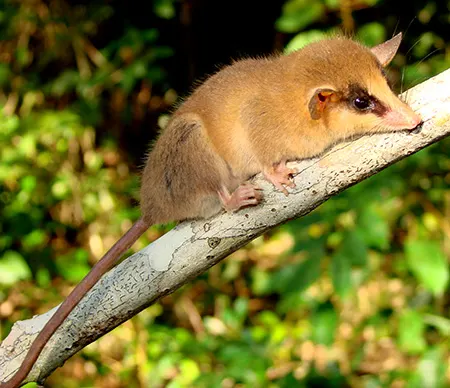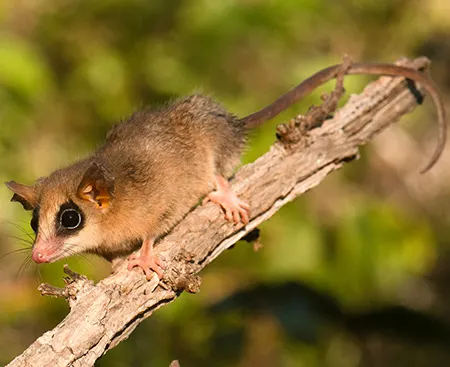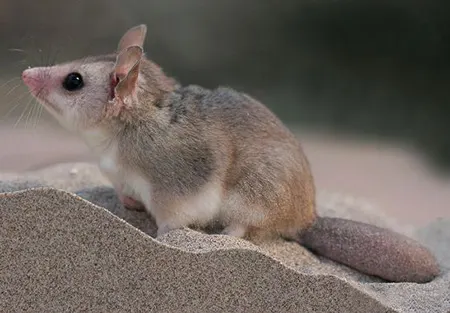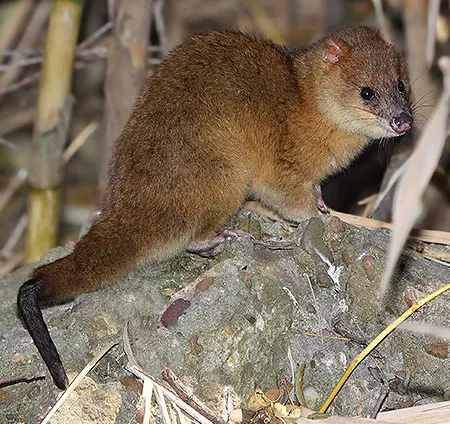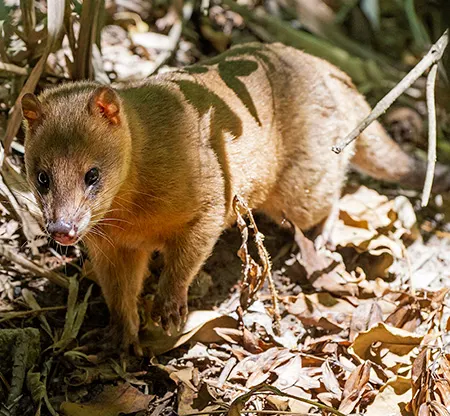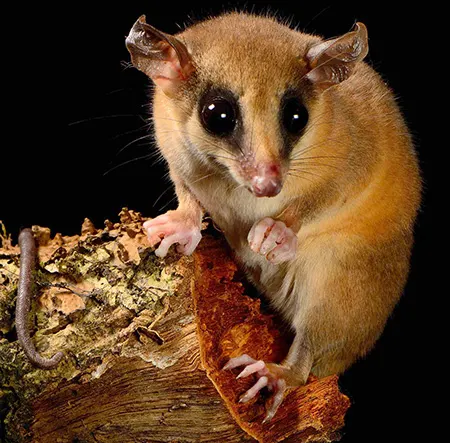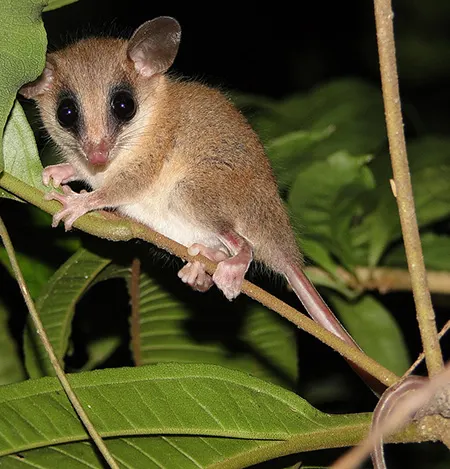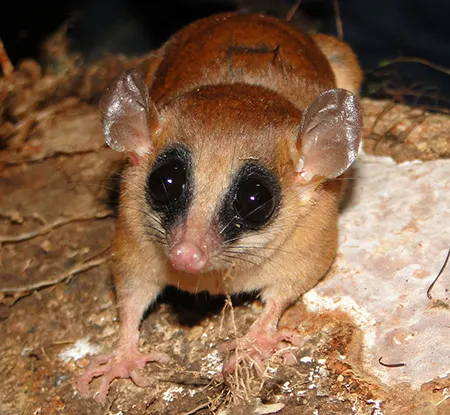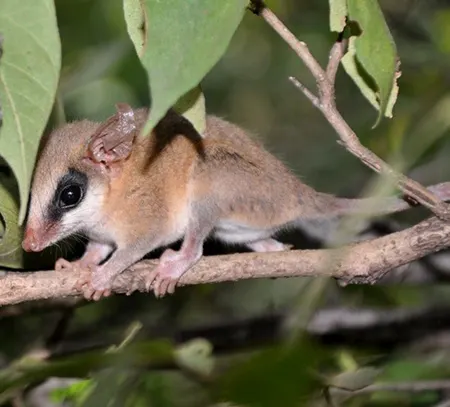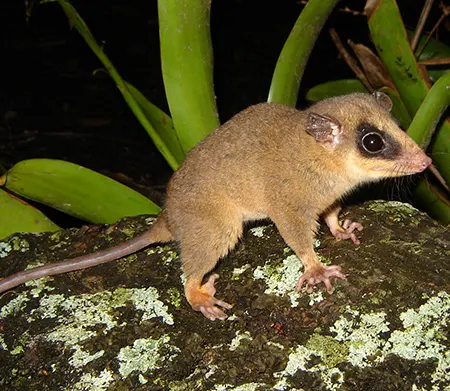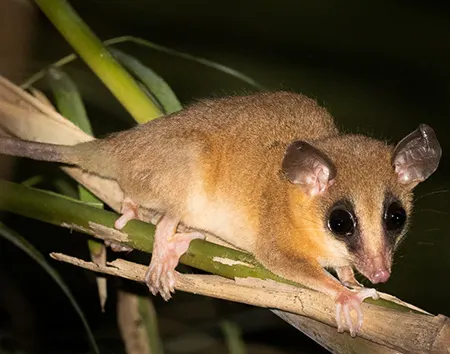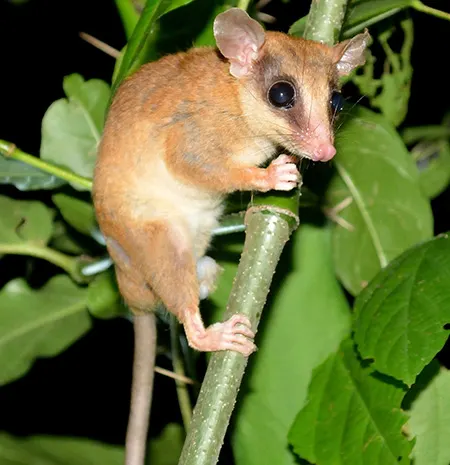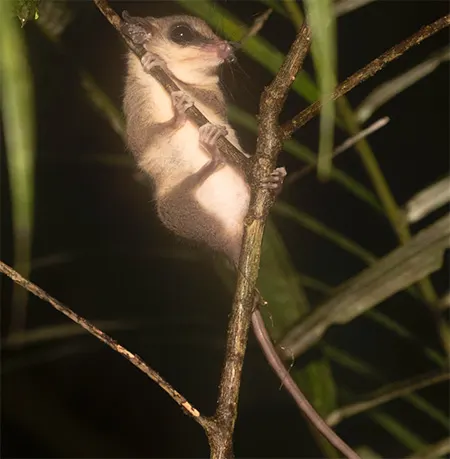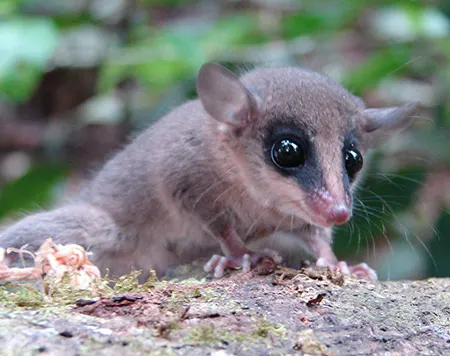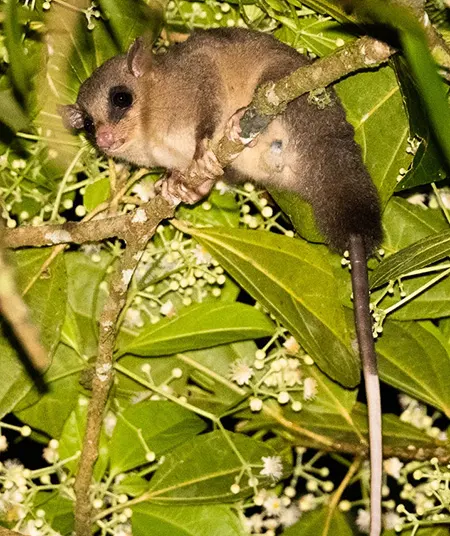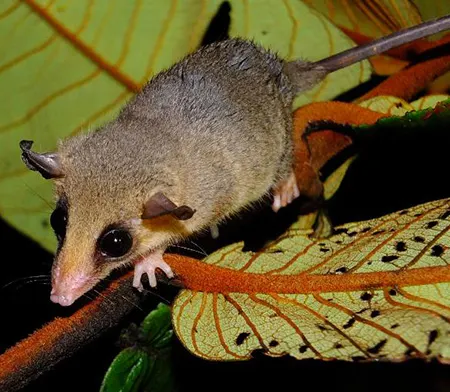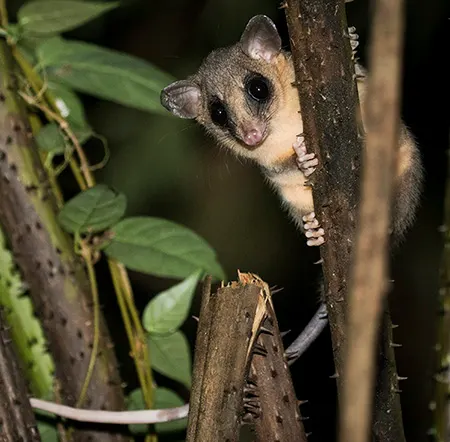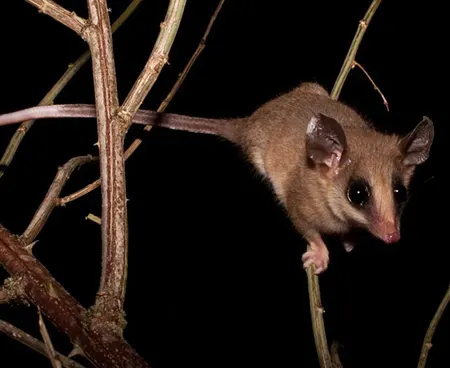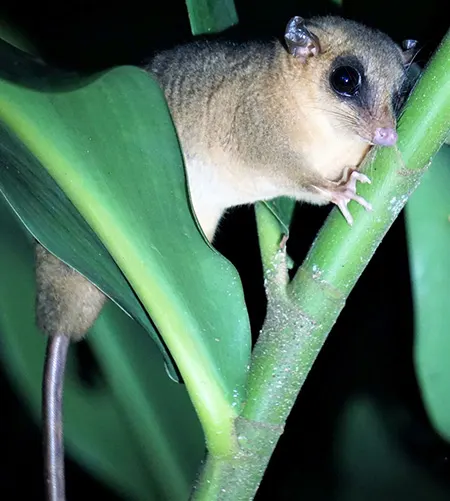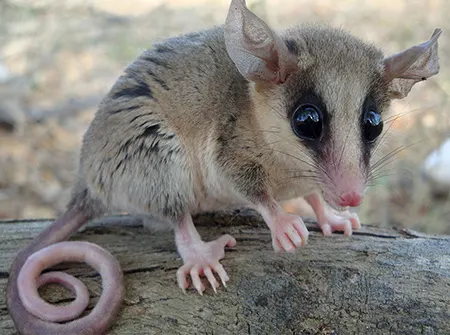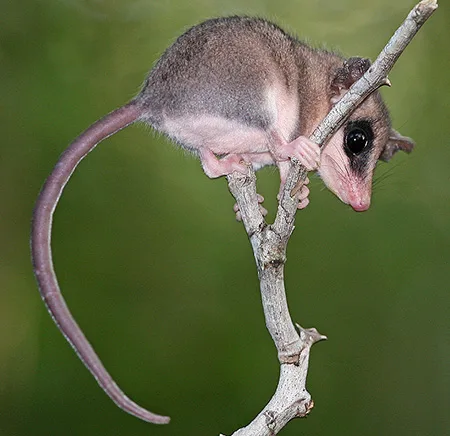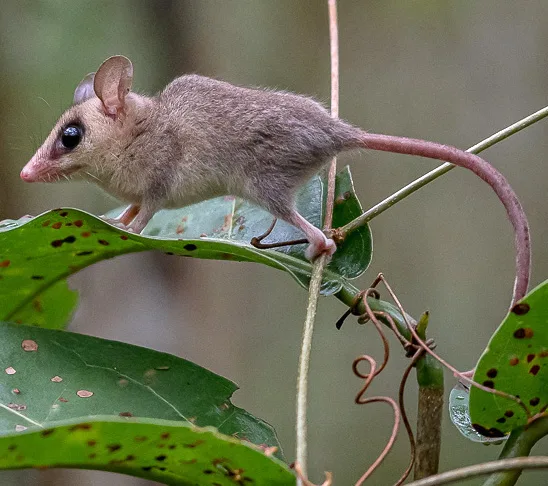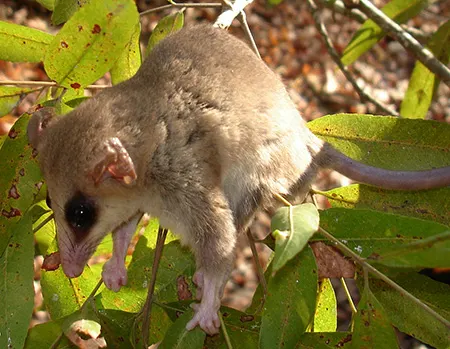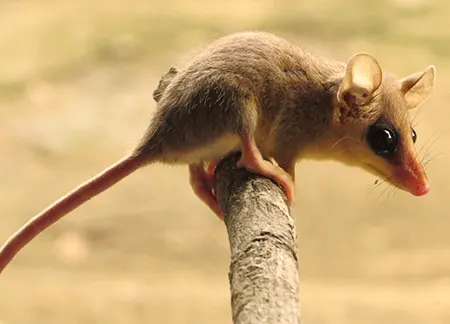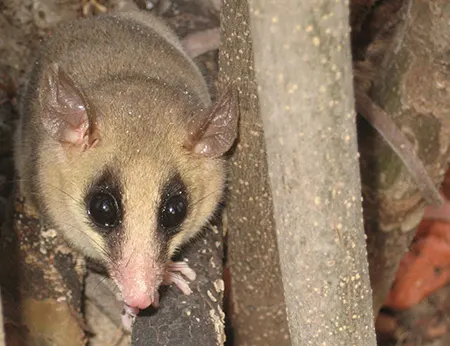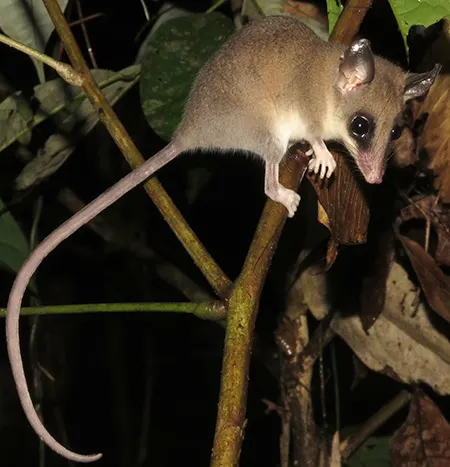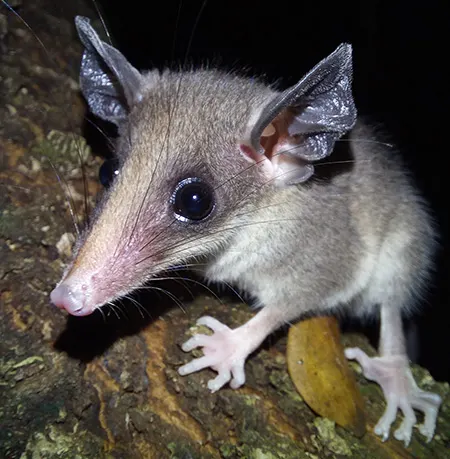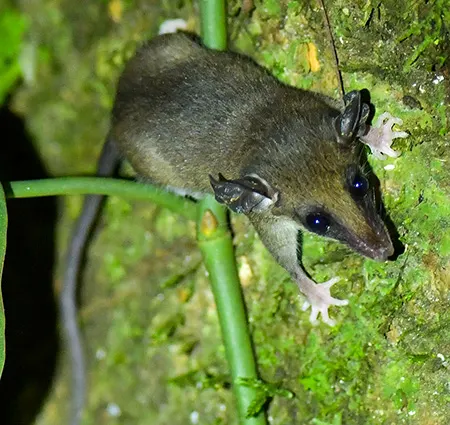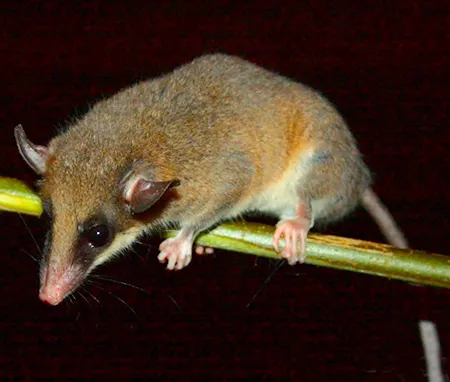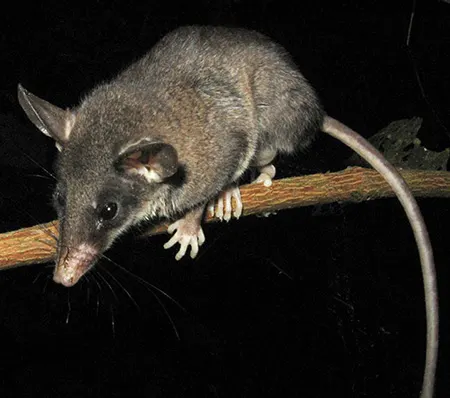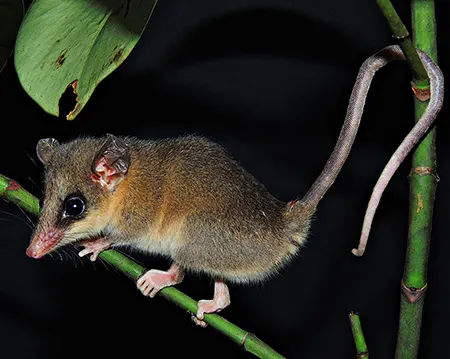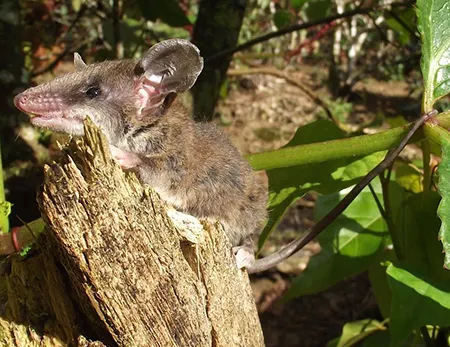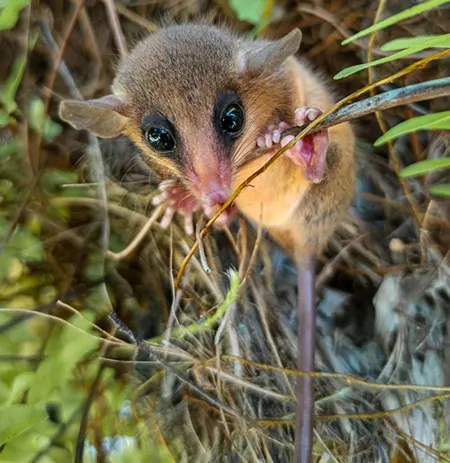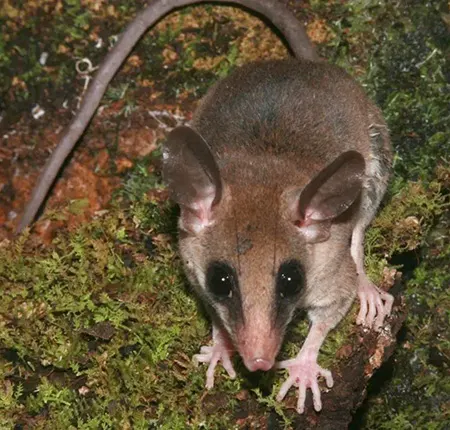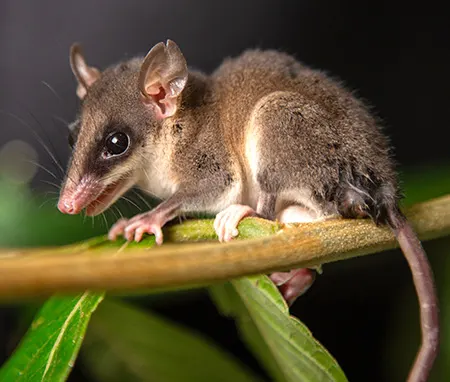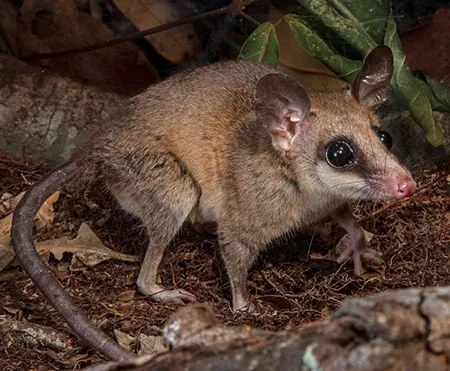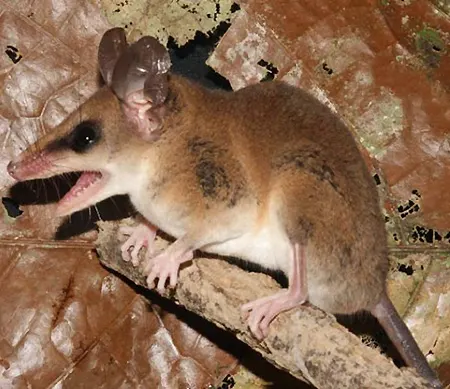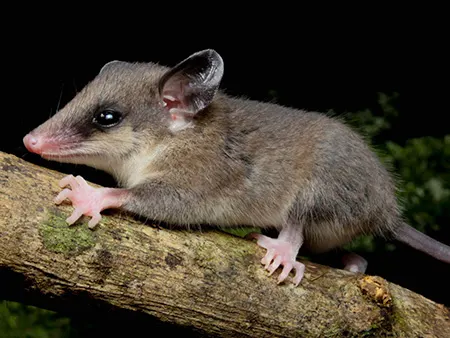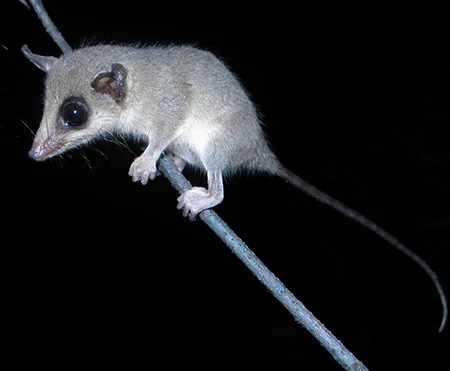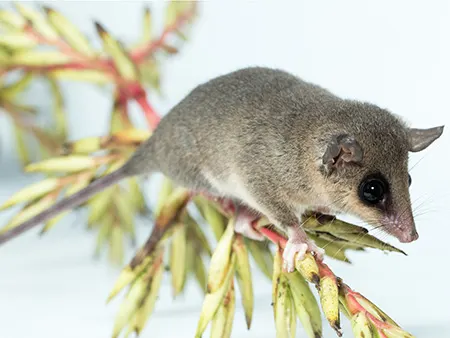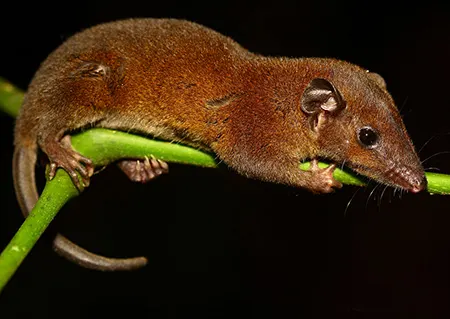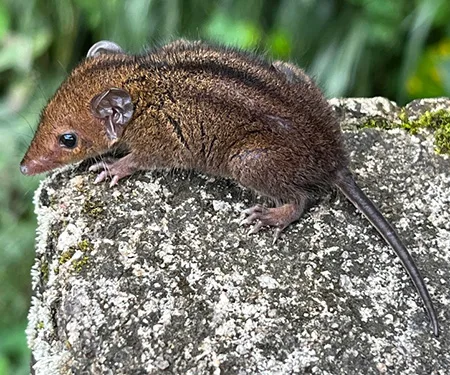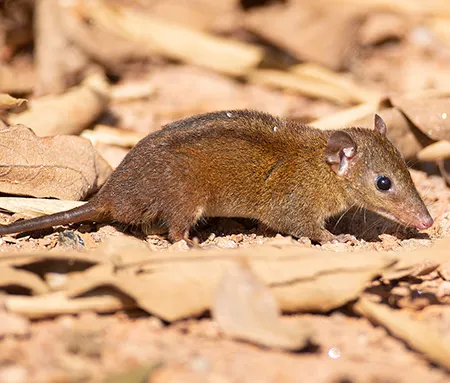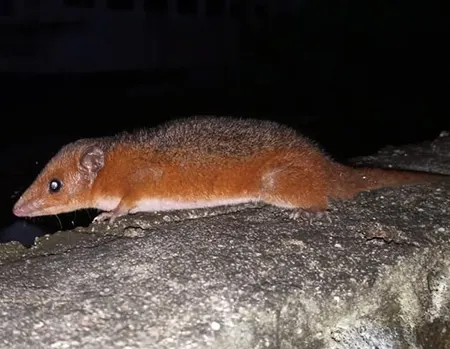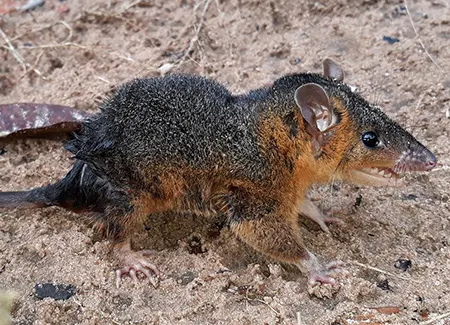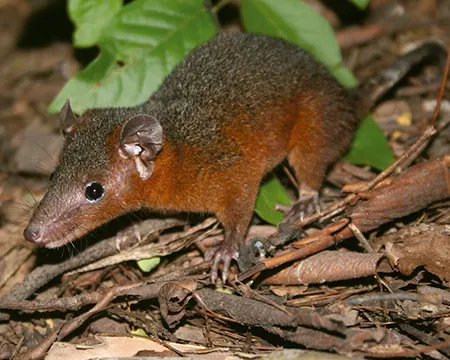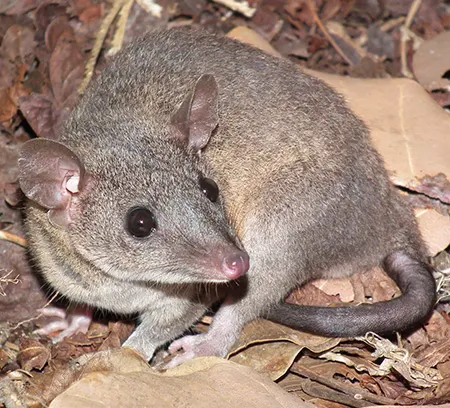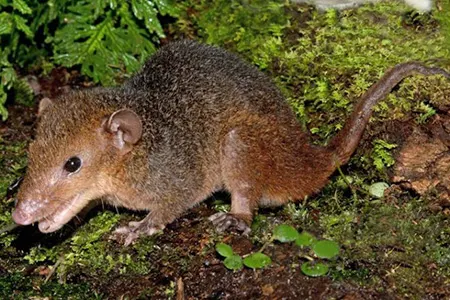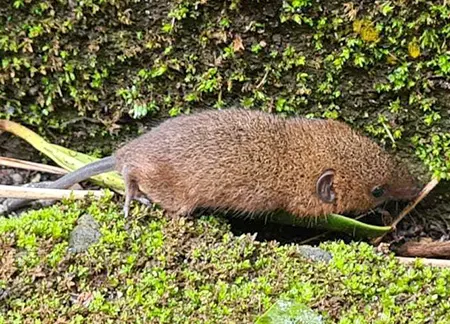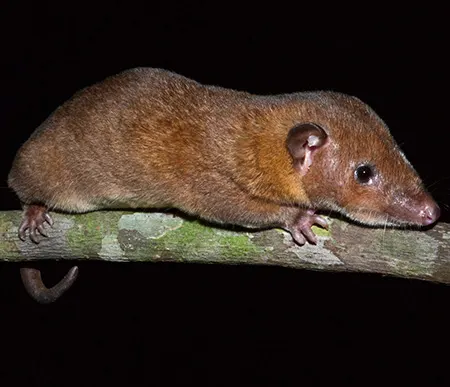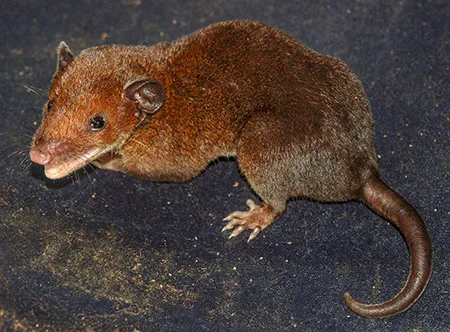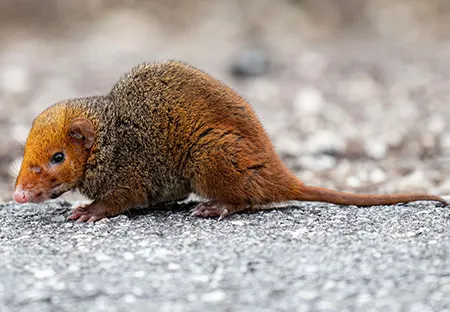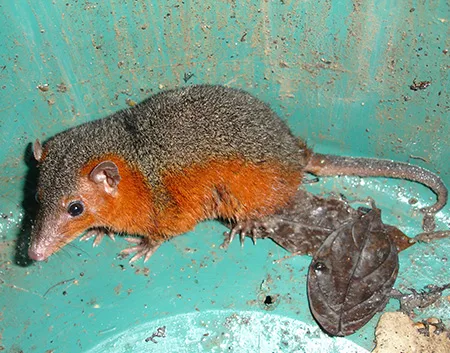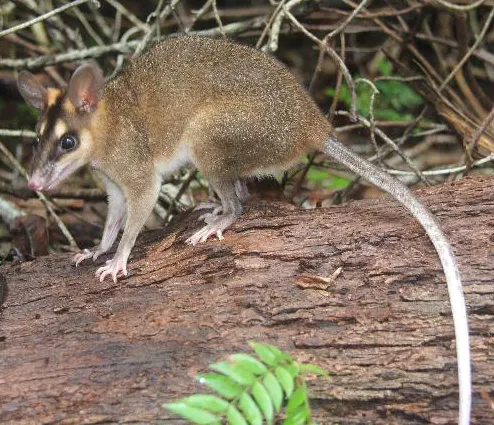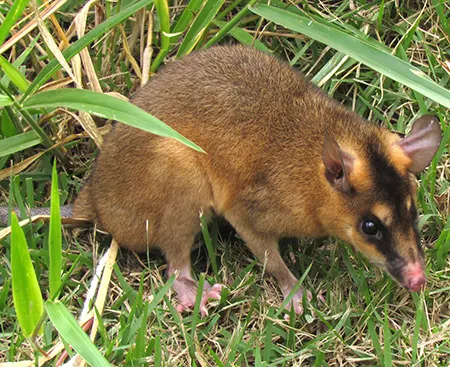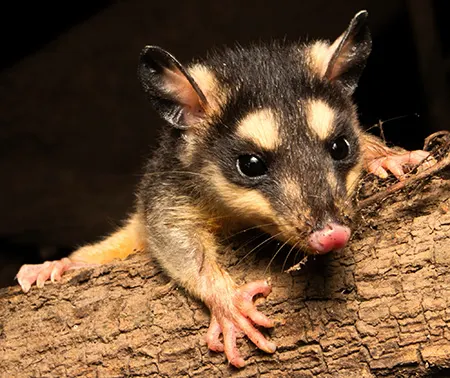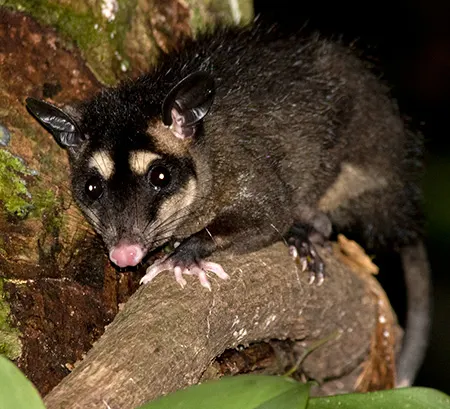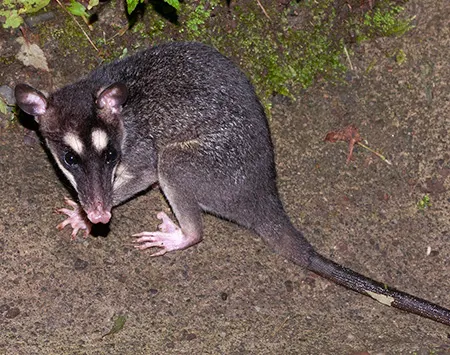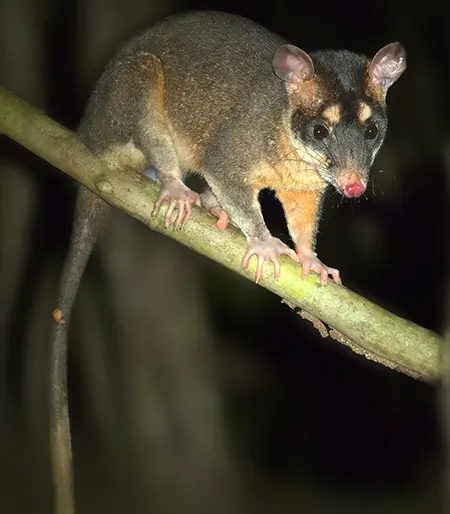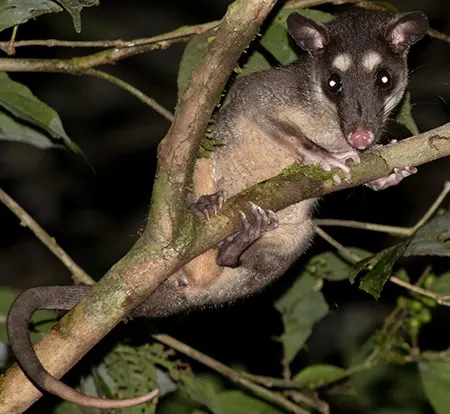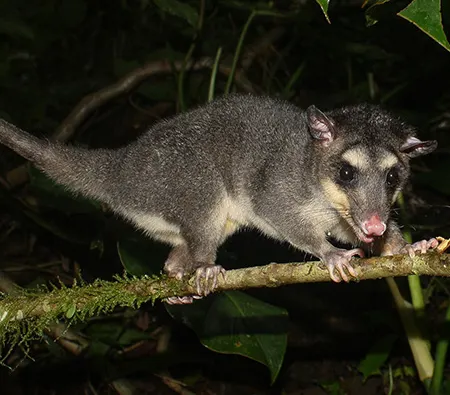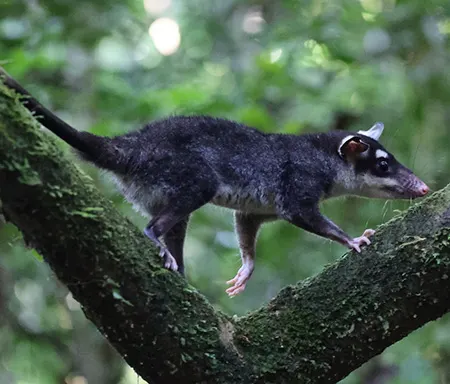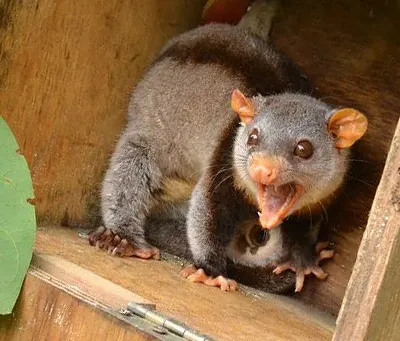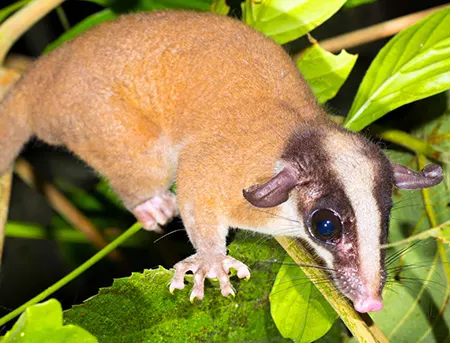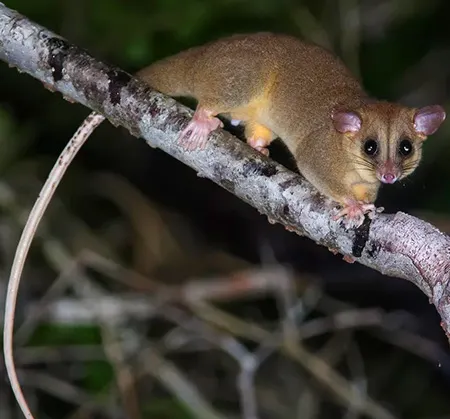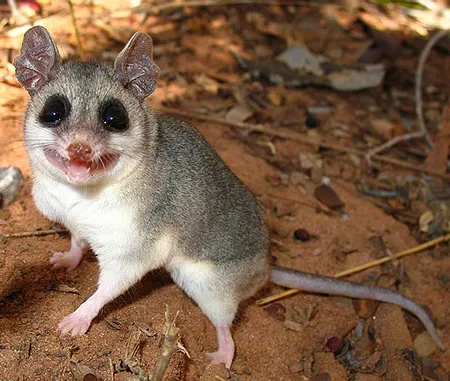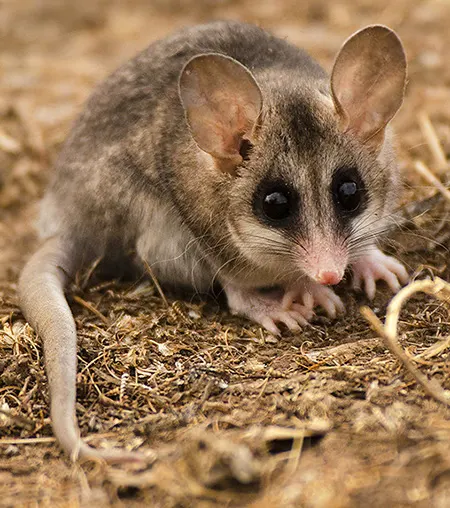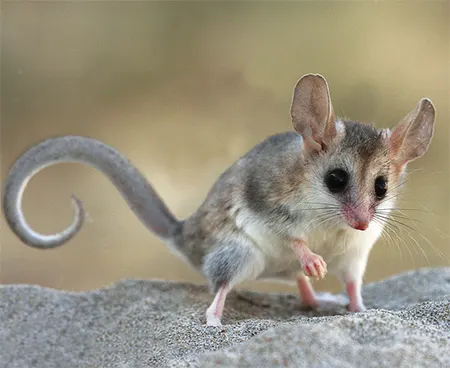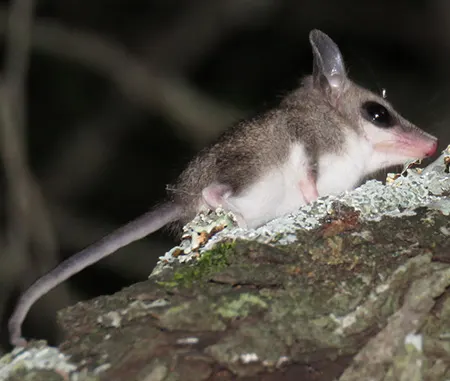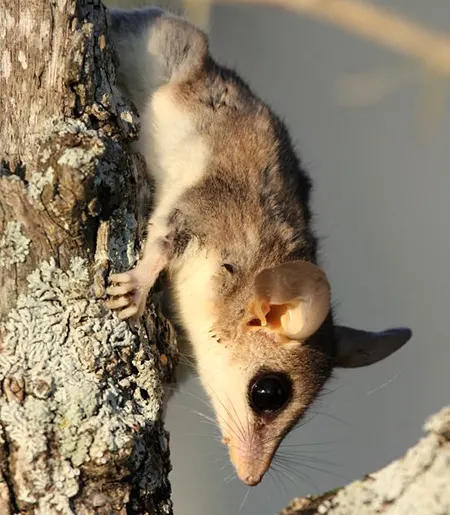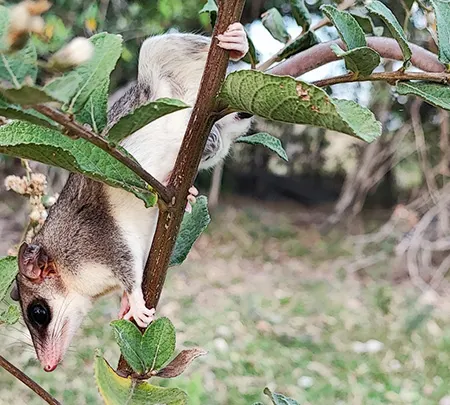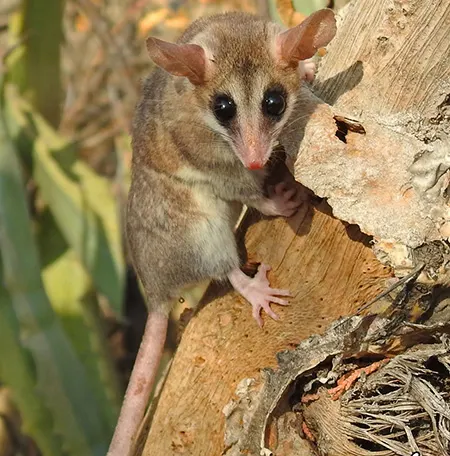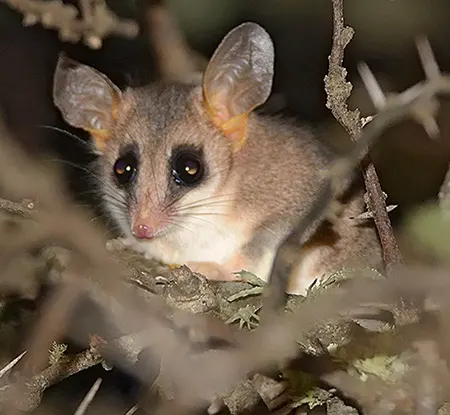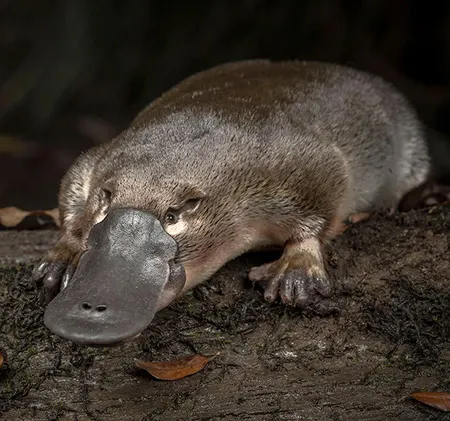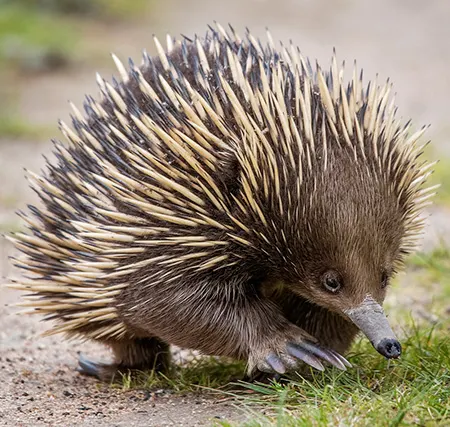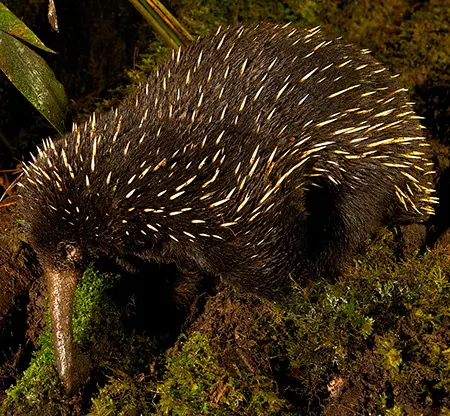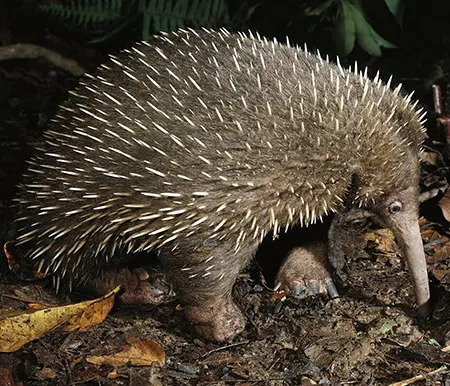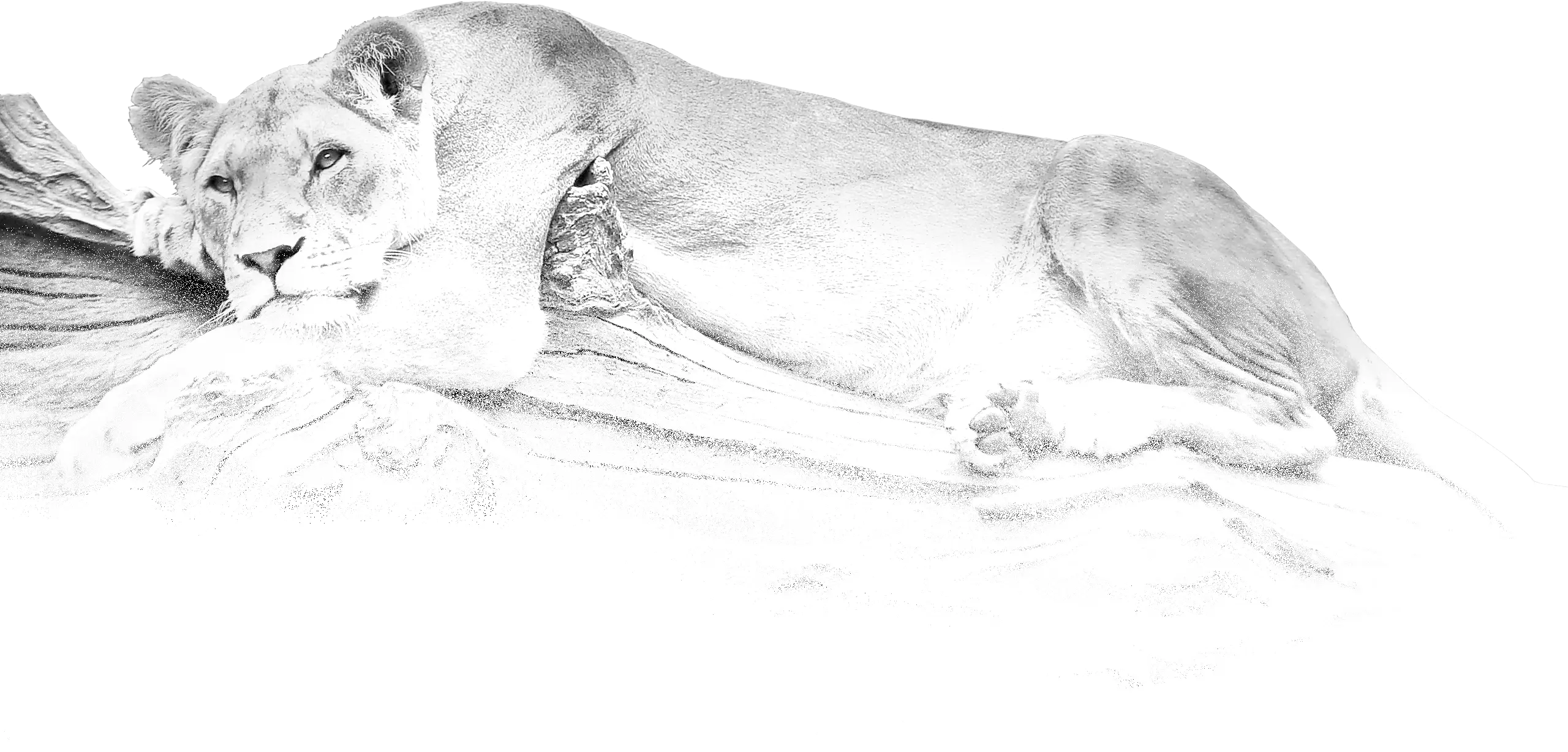
(Dasyuromorphia)
Carnivorous Marsupials
Кволоподібні
The order Dasyuromorphia includes 23 genera and 71 species of carnivorous marsupials in three families: Dasyuridae (dasyurids), Myrmecobiidae (numbats), and Thylacinidae (thylacinids). Both Myrmecobiidae and Thylacinidae contain a single recent species, while Dasyuridae contains many species. The single species within Thylacinidae (Tasmanian wolf) is likely extinct. Dasyurids and thylacinids are more related to each other than they are to numbats.
Dasyuromorphs are nocturnal or crepuscular but occasionally forage or bask during the daytime. They exhibit long-range movements and often shift home ranges. Most species of dasyuromorphs are solitary and typically only form small groups while mating or rearing young. They build burrows and nests, which they add to during pregnancy and as young develop. Some species groom themselves, especially after feeding, which involves washing the face, snout, nape of the neck, throat and chin with licked forepaws. Dasyurids (Dasyuridae) use their forepaws not only to catch and eat prey but also in tactile social interactions where they grasp and pull one another.
To cope with unpredictably fluctuating food supplies, dasyuromorphs utilize a variety of strategies to conserve body heat and reduce energy expenditures. One strategy involves lowering metabolic rates when resources are particularly scarce. Because dasyuromorphs cannot sweat, they lick and pant to keep cool. Because of the diverse habitats in which they live, strategies to conserve body heat and reduce energy loss vary greatly. Strategies include having a spherical body shape to maximize heat conservation, increasing fur thickness in the winter, living in protected hollows during the day to avoid the heat, lining nests with leaves, and huddling in groups.
Reproduction
Both male and female dasyuromorphs practice promiscuous mating during a relatively short but intense breeding season. Larger males are more successful at attracting females and fighting off competing males. During courtship, males display antagonistic behavior in which they chase the female. During copulation, the male grips the female’s neck with his teeth and clasps her body with his forepaws to facilitate mounting. This continues throughout copulation, which lasts several hours. While copulating, males in the genus Antechinus can turn their bodies 180 degrees to ward off other males. After mating, males may guard a female for up to 12 hours to prevent other males from mating with her. Male Tasmanian devils are particularly aggressive during mate guarding and do not allow the female to leave her den for food or water for days. Occasionally females are able to escape these aggressive males but usually not without injury.
Females release pheromones to signal their receptivity to mate. They solicit males they find attractive and ward off other males. Females have long periods of behavioral estrous which allow them to mate with several males unless particularly aggressive males prohibit their ability to do so. Thus, multiple paternity as a result of sperm competition is often observed. For example, it is not uncommon for a litter of four Tasmanian devils to have four different fathers. Dasyurids (Dasyuridae) exhibit a unique form of sperm competition, and, other than bats, they are the only mammals in which females can store competing sperm within their reproductive tracts prior to ovulation.
asyuromorphs are either semelparous or iteroparous. Semelparity is very rare in mammals, having arisen only in dasyurids and didelphids. Semelparous dasyuromorphs, such as antechinuses, generally live in environments with predictable seasonal patterns of food abundance. It is thus advantageous to align reproductive patterns with seasonal variation in resource abundance. The mating season occurs in the winter when resources are scarce, and consequently young are born when resources are most abundant. Because seasonal patterns are so predictable, it not risky to dedicate all of their reproductive efforts into one brief mating season.
Males devote most of their energy to one big reproductive effort, and as a result have high concentrations of stress hormones in their blood. This inhibits inflammatory and immune responses and eventually kills the exhausted males. Females may survive for a second breeding season but almost never survive for a third. Semelparous dasyuromorphs are characterized by prolonged copulation, large testes size, male sexual dimorphism, mate guarding, long behavioral estrous of females, sperm storage in female reproductive tracts, high population densities, and sperm competition.
Iteroparous dasyuromorphs, on the other hand, reside in less restricted, less predictable environments. Therefore, it is risky to invest all of their energy into one reproductive effort when resource levels are so unpredictable. During the breeding season, Northern quolls exhibit normal levels of stress hormones and have larger body sizes and tail fat stores that help them survive to the next breeding season. Iteroparous dasyuromorphs do not display any of the identifying characteristics of semelparous dasyuromorphs. Additional reasons for semelparity in some species and iteroparity in others are not well understood.
After the brief mating season, male dasyuromorphs leave females with all parental responsibilities. In semelparous species, such as antechinuses, males die before their offspring are born.
Gestation time varies greatly with body size, as does time spent in the mother’s pouch. After leaving the pouch permanently, young are carried into well-hidden dens. Dens are lined with vegetation for protection and warmth and are located in underground burrows, caves or hollow logs. As young near weaning, mothers take more frequent trips outside of the den. When mothers begin to sleep away from their young, male offspring disperse from the den. Males move away from their mother’s home range while females remain in their mother’s home range for life.
During lactation, many dasyuromorph mothers are biased towards their male offspring and provide them with more nutrient-rich milk. Because larger males are more successful in attracting mates and reproducing, it is advantageous for mothers produce larger males that have a better chances of passing on her genes.
Lifespan/Longevity
The lifespan of dasyuromorphs varies greatly among the three families. Male numbats live up to 5 or 6 years in captivity, while females generally live longer. Little is known about Tasmanian wolves in the wild, and no information about their lifespan was recorded while they were still abundant. In captivity, however, they lived up to 12 years.
The lifespan of dasyurids is related to the amount of energy invested in early reproduction. Semelparous species, such as those in the genera Antechinus and Sminthopsis, invest heavily in one reproductive event and usually only live 1 to 2 years. Iteroparous species of dasyurids do not invest as much in early reproduction and live longer lives. For example, Tasmanian devils (iteroparous dasyurids) live an average of 8 years in the wild.
Although small dasyurids appear short lived, they actually have long lifespans compared to similarly sized eutherians. Whereas small dasyurids live 1 to 2 years, mice live only 4 to 6 months. The reasons behind these differences are still unknown but appear to be related to differences in metatherian and eutherian physiology.
Communication and Perception
Due to their nocturnal habits, dasyuromorphs have reduced their dependence on sight for communication and perception and have adapted olfactory and auditory mechanisms to compensate. Dasyuromorphs utilize chemical signals such as scent markers as a primary mode of communication. Commonly used chemical signals include urine dribble, cloacal drag, chin rub, and sternal rub. These are used to mark territory or as a status signal during breeding. Other social behaviors, such as mouth sniffing, naso-nasal sniffing, touching, and cloacal sniffing have been observed. Cloacal sniffing is especially important in male-female interactions.
Auditory communication is also common in dasyuromorphs. Vocalizations are mostly associated with defensive situations, such as nest defense, food defense, and threats but are also used in parent-offspring interactions as well as courtship and mating. Dasyuromorphs emit a chatter, tail rattle, foot tap, huff, or bark as an alarm mechanism when they feel threatened or in danger. Defensive vocalizations include hisses, huffs, grunts, growls and screams. When separated from their mother, young dasyuromorphs produce vocalizations that trigger mother retrieval behavior.
Dasyuromorphs also possess vibrissae that orient their attacks during predation. Males use tactile communication during mounting and copulation by grasping the neck and abdomen of the female.
Food Habits
Dasyuomorphs are generalized predators that eat a wide range of invertebrate and vertebrate prey. Numbats are insectivorous, and one individual can consume 10,000 to 20,000 termites each day. Other families within Dasyuromorphia are carnivorous. They catch and eat both terrestrial and arboreal insects, including moths, beetles, and mosquitoes. Large species are also known to eat juvenile mice.
Vision and olfaction play key roles in hunting. Most dasyuromorph species possess vibrissae that help orient their attack toward prey; however, visual and tactile methods are also employed. Carnivorous marsupials bite or pin their prey with their forepaws. Bites are directed toward the anterior part of the body (head or neck) in order to assure capture. They are also known to shake and toss prey if they show resistance.
Predation
Dasyuromorph are vulnerable to reptilian, avian, and mammalian predators. They do not have any physical adaptations to deter predators and thus tend to minimize predation by foraging at night and under protective covering. Small dasyuromorphs are particularly vulnerable to introduced European red foxes. Domestic dogs, dingos, and domestic cats also prey upon dasyuromorphs.
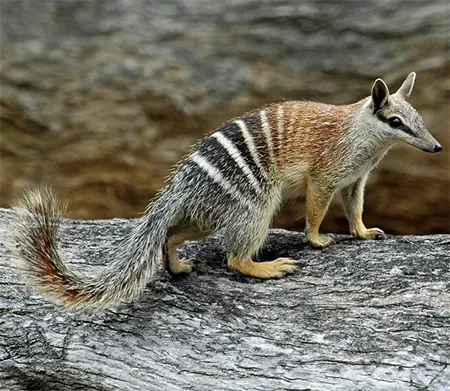
(Myrmecobius fasciatus)
Numbat
Намбат
It is found in the Dryandra Woodland and the Tone-Perup Nature Reserve in Western Australia, and also in South Australia and New South Wales.
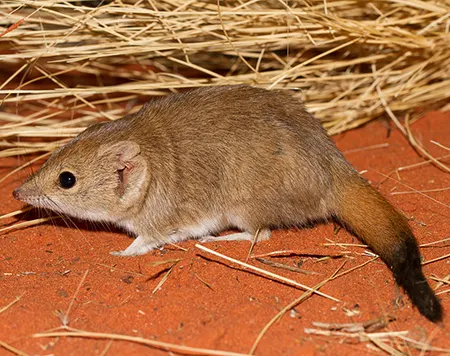
(Dasycercus cristicauda)
Crest-tailed Mulgara
Мулгара гребнехвоста
It has been recorded in the southern Simpson Desert near the tri-state border and in the Tirari and Strzelecki Deserts of South Australia and the western Lake Eyre region.
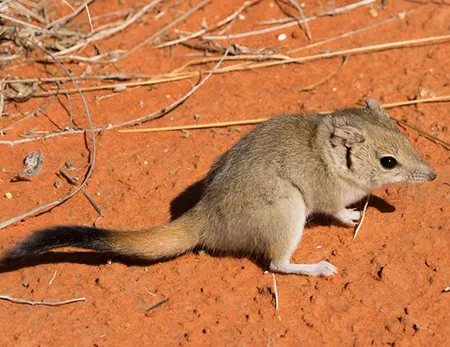
(Dasycercus blythi)
Brush-tailed Mulgara
Мулгара пухнастохвоста
It is found in central Western Australia and the southern Northern Territory, as well as isolated locations in northern South Australia and western Queensland.
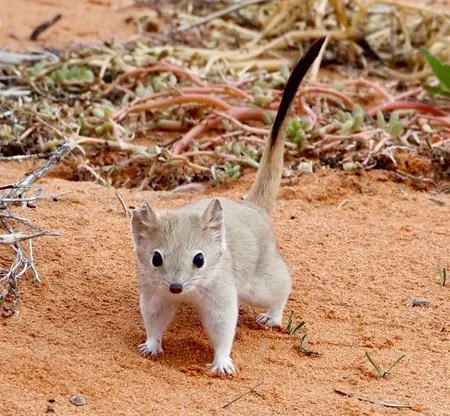
(Dasycercus hillieri)
Ampurta
Ампурта
The genus (Dasycercus) also includes: Little Mulgara (Dasycercus marlowi), Northern Mulgara (Dasycercus woolleyae).
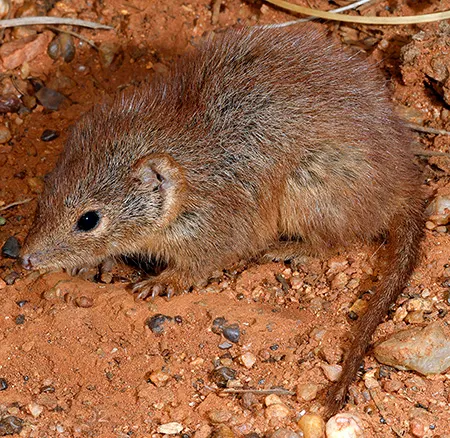
(Dasykaluta rosamondae)
Kaluta
Калута
It is moderately common in the Pilbara, the western part of the Little Sandy Desert, and parts of the Carnarvon Basin in Western Australia.
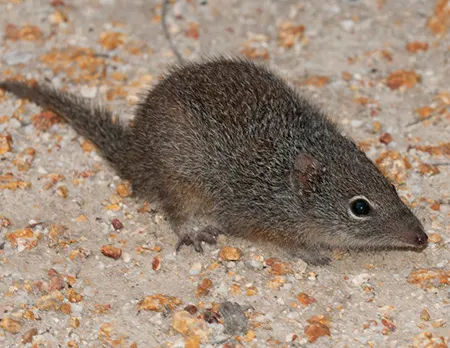
(Parantechinus apicalis)
Dibbler
Діблер
It is found in south-western Western Australia, where it is located on Boullanger Island, Whitlock Island and Escape Island. They are also found on the South Coast in the Fitzgerald River National Park, Peniup Proposed Nature Reserve and on Gunton Island in the Recherche Archipelago.
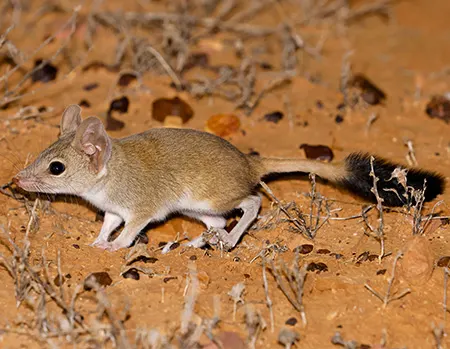
(Dasyuroides byrnei)
Kowari
Коварі
It is found in stony desert areas of the Lake Eyre drainage basin, including the Sturt Stony Desert in north-eastern South Australia and south-western Queensland’s Channel Country.
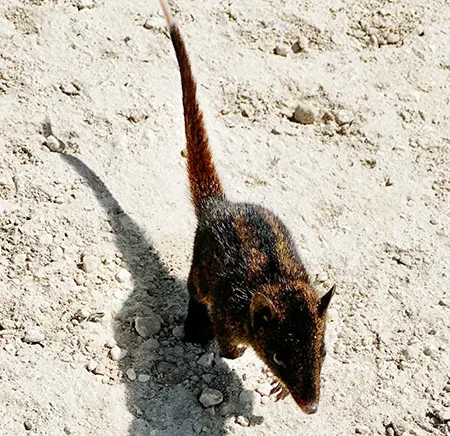
(Myoictis leucura)
Woolley’s Three-striped Dasyure
Трисмугий дасюр Вуллі
It is found in isolated locations in southern and eastern Papua New Guinea.
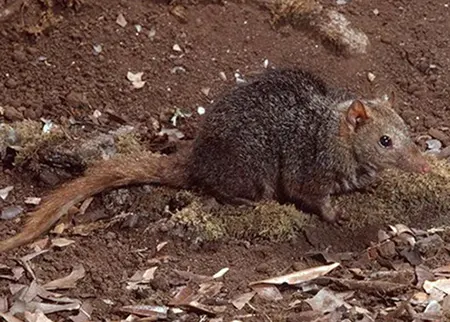
(Myoictis wallacei)
Wallace's Three-striped Dasyure
Трисмугий дасюр Воллеса
It is found in Indonesia and Papua New Guinea, specifically on the Aru Islands in Indonesia’s Maluku Province. It occurs at elevations of 30–920 m.
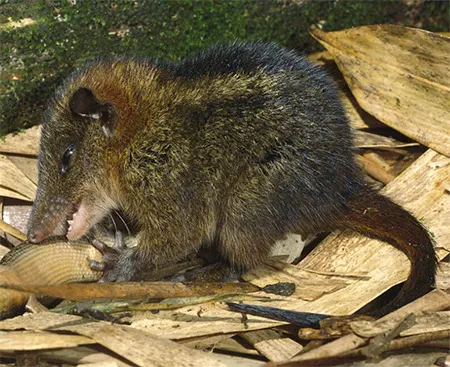
(Myoictis melas)
Three-striped Dasyure
Трисмугий дасюр
It is found in West Papua and Papua New Guinea. It occurs at elevations of 0–1,800 m.
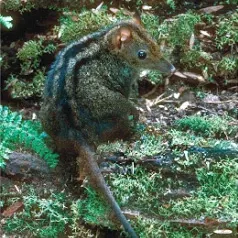
(Myoictis wavicus)
Tate's Three-striped Dasyure
Трисмугий дасюр Тейта
It is found in eastern Papua New Guinea. It occurs at elevations of 975–1,810 m.

(Pseudantechinus bilarni)
Sandstone False Antechinus
Піщаникова сумчаста миша
It is found in rocky areas around the Top End and the Gulf of Carpentaria in the Northern Territory. It also inhabits coastal rock platforms on Marchinbar Island.
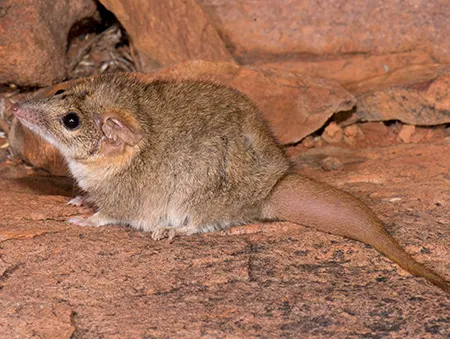
(Pseudantechinus macdonnellensis)
Fat-tailed False Antechinus
Товстохвоста сумчаста миша
It is found in the rocky environments of Central Australia, as well as throughout South Australia, the Northern Territory, and Western Australia.
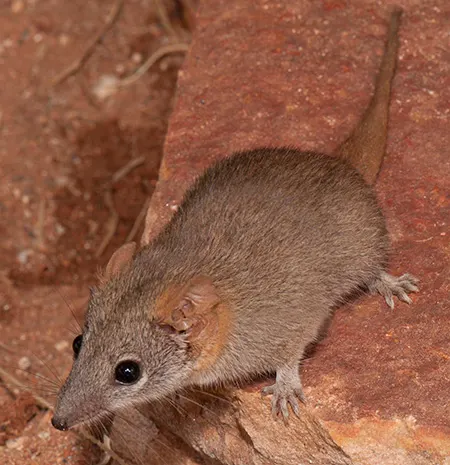
(Pseudantechinus mimulus)
Carpentarian False Antechinus
Карпентарійський сумчаста миша
It is endemic to Australia and found only in five localities: near Mount Isa in north-western Queensland, at Alexandria Station on the Barkly Tableland in the Northern Territory, and on three small islands in the Sir Edward Pellew Group.
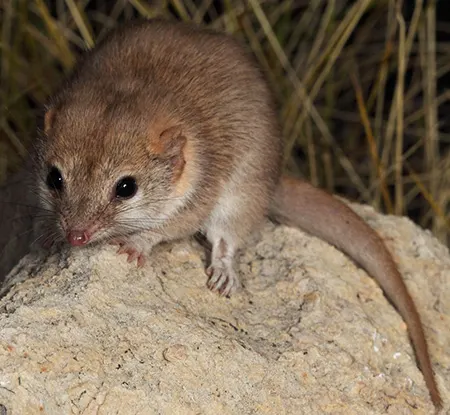
(Pseudantechinus ningbing)
Ningbing False Antechinus
Кімберлійська сумчаста миша
It is found in the Kimberley region of Western Australia, inhabiting rocky outcrops in a wide range of vegetation types.
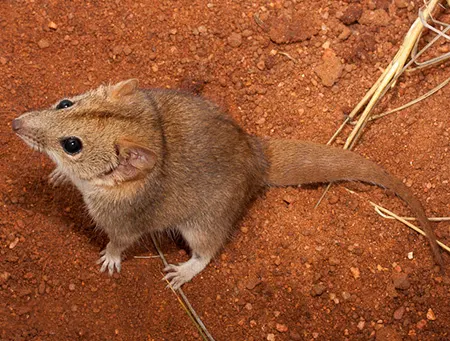
(Pseudantechinus woolleyae)
Woolley's False Antechinus
Сумчаста миша Вуллі
It inhabits rocky hillsides, usually vegetated with acacia scrub or spinifex grass. It is found in the western area of Western Australia.
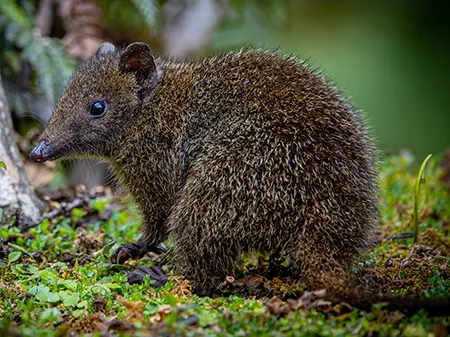
(Neophascogale lorentzii)
Speckled Dasyure
Плямистий дасюр
It is found in the Central Range of New Guinea, from the Weyland Range to the Hagen Range. It occurs at elevations of 1,200–3,900 m.
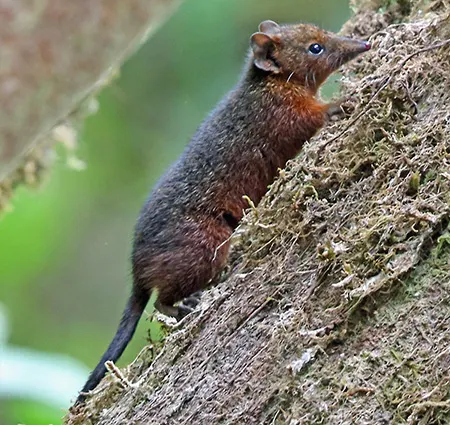
(Phascolosorex doriae)
Red-bellied Marsupial Shrew
Червоночерева сумчаста землерийка
It is endemic to West Papua, from the Vogelkop Peninsula to the Weyland Range. It occurs at elevations of 900–2,000 m.
The genus (Phascolosorex) also includes: Narrow-striped Marsupial Shrew (Phascolosorex dorsalis).
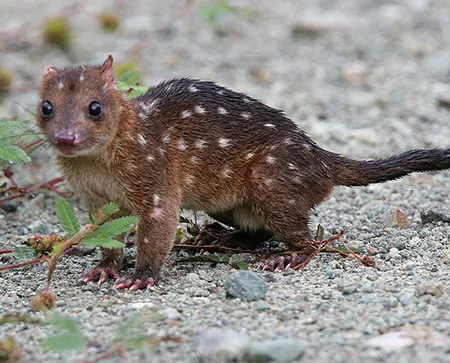
(Dasyurus albopunctatus)
New Guinean Quoll
Квол новогвінейський
It lives throughout the forests of New Guinea, except in the south-western lowlands, at elevations up to 3,300 m but usually closer to 900 m.
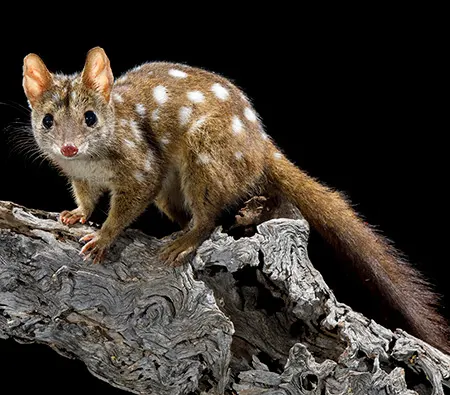
(Dasyurus geoffroii)
Western Quoll
Квол західний
It is confined to the south-western corner of Western Australia.
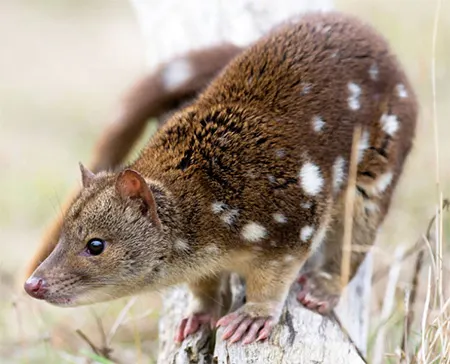
(Dasyurus hallucatus)
Northern Quoll
Квол північний
It occurs from the Pilbara region of Western Australia across the Northern Territory to south east Queensland.
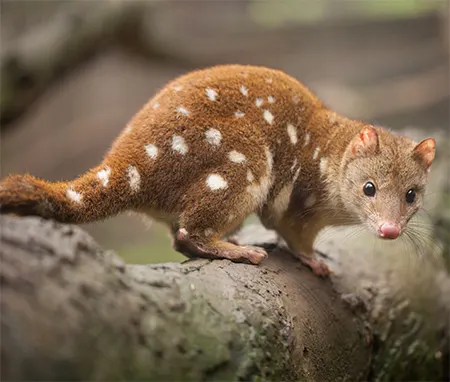
(Dasyurus maculatus)
Tiger Quoll
Квол тигровий
It is found in wet forests from south-eastern Australia and Tasmania to northern Queensland.
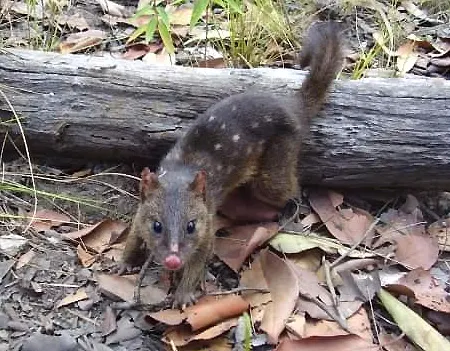
(Dasyurus spartacus)
Bronze Quoll
Квол бронзовий
It is found only in the Trans-Fly savanna and grasslands of Papua New Guinea and South Papua in Indonesia.

(Dasyurus viverrinus)
Eastern Quoll
Квол крапчастий
It is found in Tasmania and on Bruny Island. It inhabits rainforests, heathlands, alpine areas, and scrublands below 1,500 m.
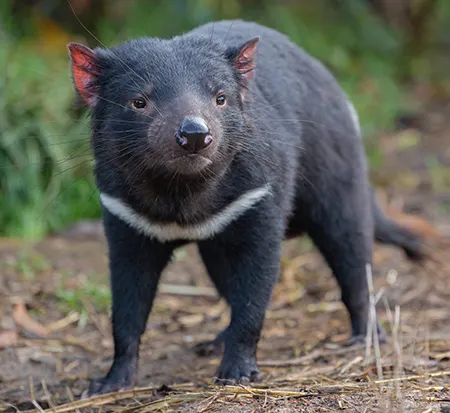
(Sarcophilus harrisii)
Tasmanian Devil
Тасманійський диявол
It is found in all habitats on the island of Tasmania, including the outskirts of urban areas, and is distributed throughout the Tasmanian mainland and on Robbins Island.
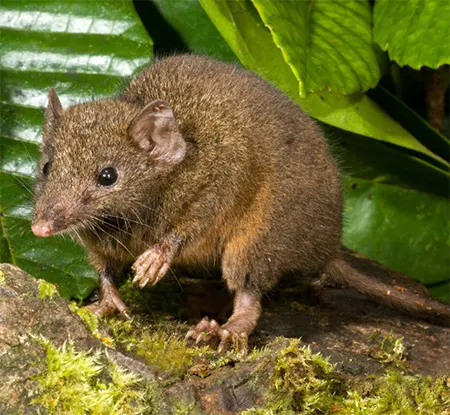
(Antechinus adustus)
Rusty Antechinus
Антехінус рудий
It is found in a small area of tropical vine forest from Paluma to Mount Spurgeon in northeastern Queensland, Australia.
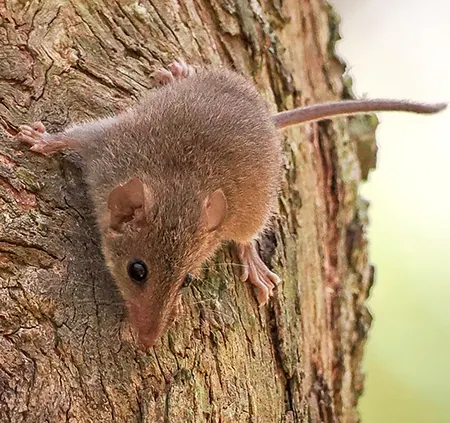
(Antechinus agilis)
Agile Antechinus
Антехінус спритний
It is found in southern and south-eastern New South Wales and south-eastern Victoria, Australia. It inhabits wet or moist forests below 2,000 m.
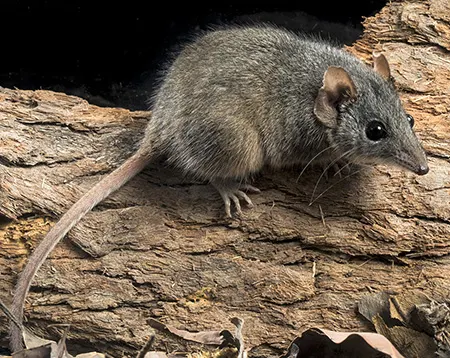
(Antechinus argentus)
Silver-headed Antechinus
Антехінус срібноголовий
It is found in south-eastern Queensland, Australia. It occurs at elevations of 650–900 m.
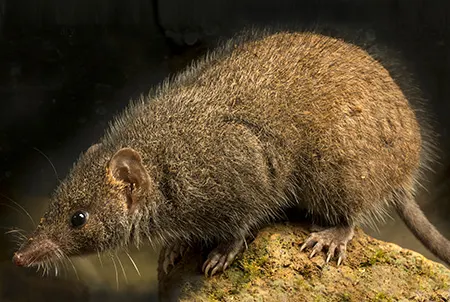
(Antechinus arktos)
Black-tailed Antechinus
Антехінус чорнохвостий
It is found in the Springbrook National Park between northern New South Wales and the Gold Coast Hinterland, Australia. It occurs at elevations of 780–950 m.
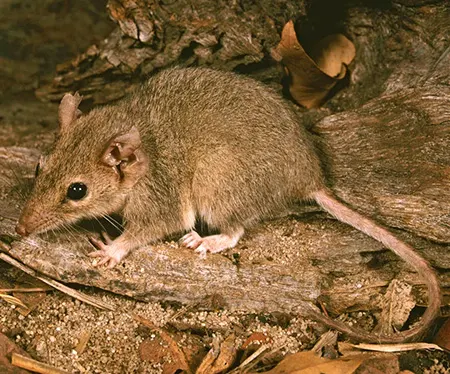
(Antechinus bellus)
Fawn Antechinus
Антехінус палевий
It is found in the Top End of the Northern Territory, Australia.
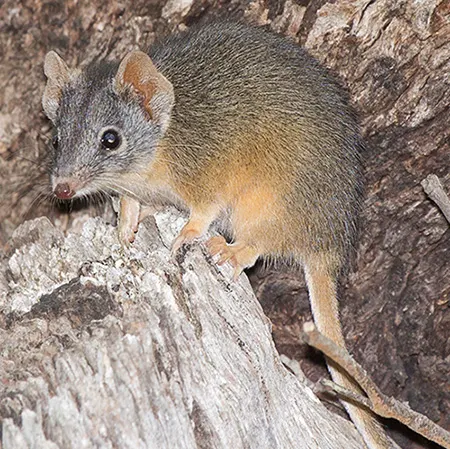
(Antechinus flavipes)
Yellow-footed Antechinus
Антехінус жовтоногий
It is found discontinuously from around the Mount Lofty Ranges in South Australia to around Eungella in Queensland, with the exception of most of coastal New South Wales and Victoria. Isolated populations occur in north-eastern Queensland and in south-western Western Australia.
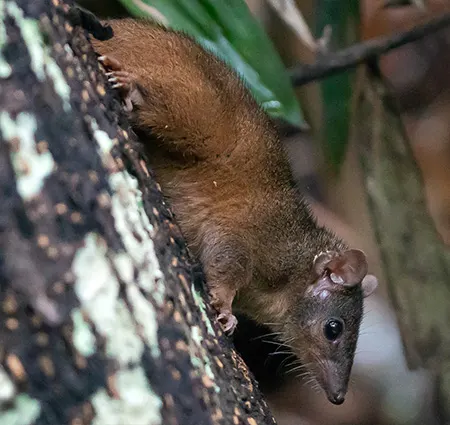
(Antechinus godmani)
Atherton Antechinus
Антехінус Ґодмана
It is restricted to a 130 km region of rainforest between Mount Bellenden Ker and Cardwell, in north-eastern Queensland, Australia. It occurs at elevations of 600–1,540 m.
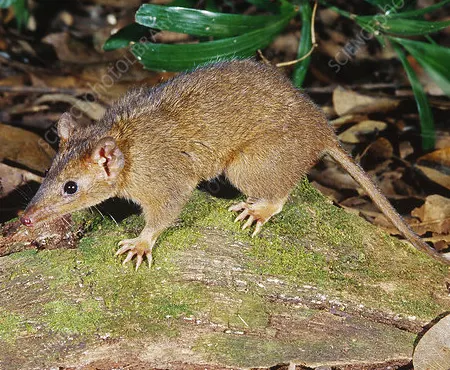
(Antechinus leo)
Cinnamon Antechinus
Антехінус корицевий
It is completely confined to a small area on the Cape York Peninsula in Australia, where it inhabits semi-deciduous rainforest.
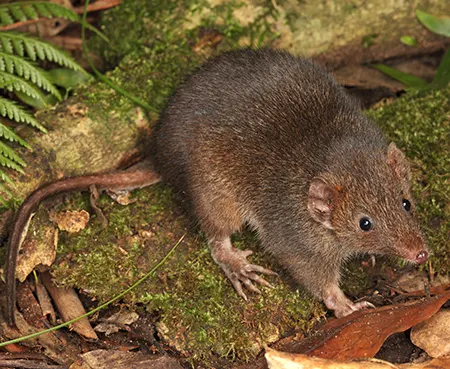
(Antechinus mimetes)
Mainland Dusky Antechinus
Антехінус материковий темний
It is found from south-western Victoria to north-eastern New South Wales. It occurs at elevations of 0–1,800 m.
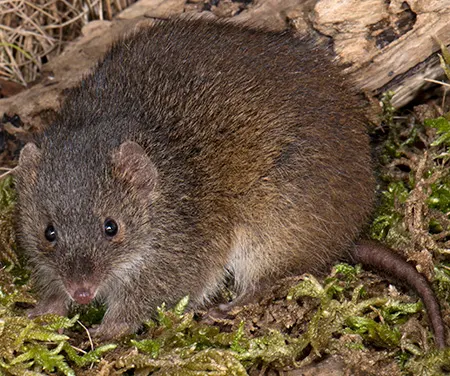
(Antechinus minimus)
Swamp Antechinus
Антехінус болотний
It is found in the southern parts of the Central Highlands, Wimmera, and Alpine areas of Victoria, as well as in the extreme south of South Australia around Mount Gambier. It also occurs in Tasmania and on the islands of King, Flinders, and Sunday in the Bass Strait.
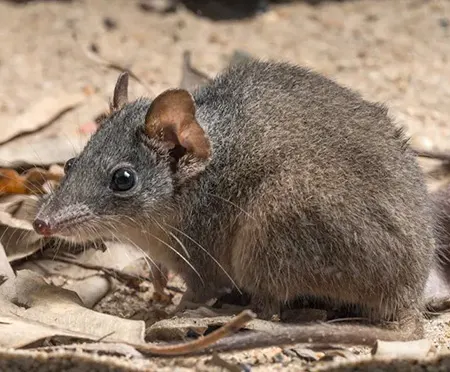
(Antechinus mysticus)
Buff-footed Antechinus
Антехінус світлоногий
It is found in in south-eastern Queensland, Australia. It occurs at elevations of 100–1,000 m.
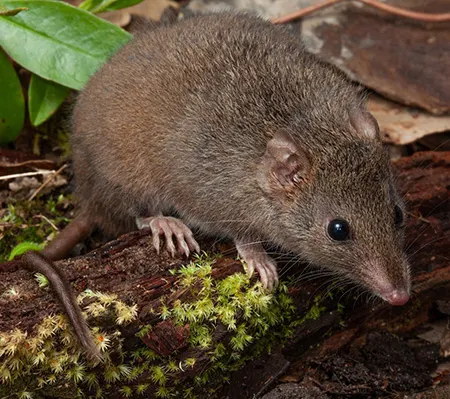
(Antechinus stuartii)
Brown Antechinus
Антехінус коричневий
It is found east of the Great Dividing Range in Australia, from south-eastern Queensland to around Kioloa, New South Wales. It is mostly found in forested habitats.

(Antechinus subtropicus)
Subtropical Antechinus
Антехінус субтропічний
It is found south from Gympie in Queensland, Australia, to the far north-east of New South Wales, where it is essentially restricted to subtropical vine forest below 1,000 m elevation.
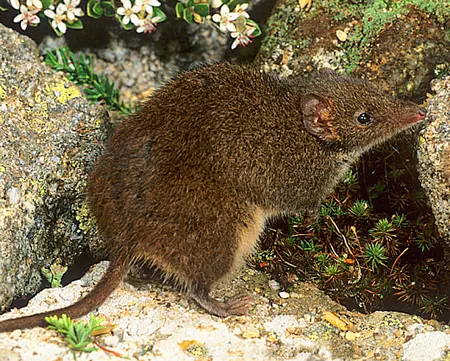
(Antechinus swainsonii)
Tasmanian Dusky Antechinus
Антехінус Свенсона
It is found in forested areas across the island of Tasmania.
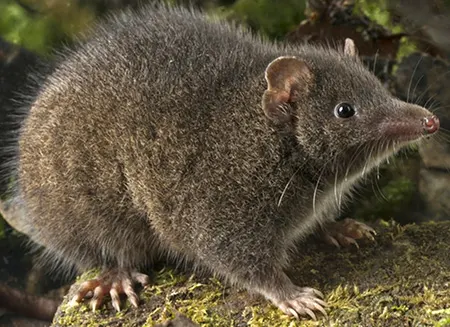
(Antechinus vandycki)
Tasman Peninsula Dusky Antechinus
Антехінус Ван Дейка
It is endemic to south-eastern Tasmania.
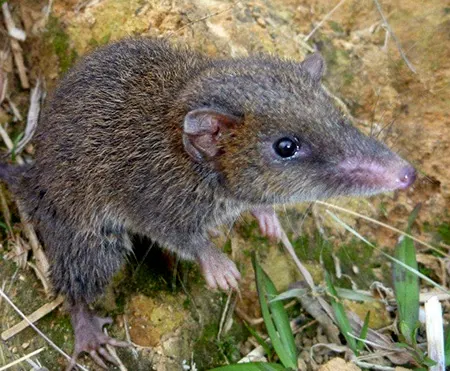
(Murexia habbema)
Habbema Dasyure
Мурексія Хаббеми
It is found in the Central Range of New Guinea, from the Snow and Star Mountains to the northern Central Province. It occurs at elevations of 1,600–3,660 m.
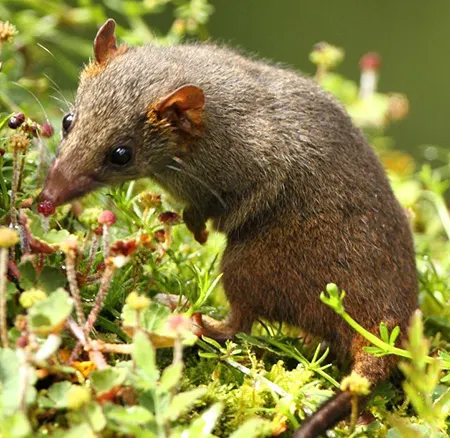
(Murexia melanurus)
Black-tailed Dasyure
Мурексія чорнохвоста
It is native to New Guinea, where it ranges across the Central Cordillera of Western New Guinea, which is part of Indonesia, and of Papua New Guinea. It is also present in the Arfak Mountains of Western New Guinea and the Torricelli Mountains in northern Papua New Guinea. It occurs at elevations of 0–2,800 m.
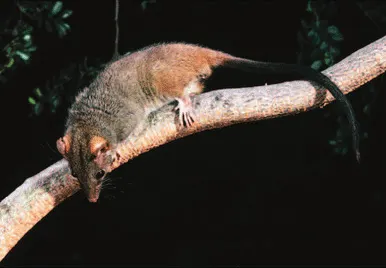
(Murexia naso)
Western Long-nosed Dasyure
Мурексія носата
It is found in Indonesia and Papua New Guinea. It inhabits subtropical or tropical dry forests at elevations 1,400–2,800 m.
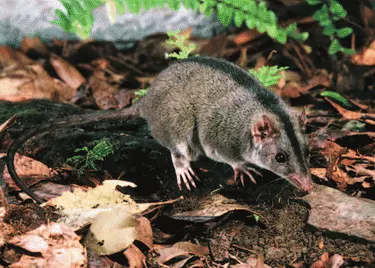
(Murexia longicaudata)
Aru Short-furred Dasyure
Мурексія короткошерста
It lives in Papua, Indonesia and Papua New Guinea. It occurs at elevations of 0–2,200 m.
The genus (Murexia) also includes: Southern Short-furred Dasyure (Murexia aspera), Northern Short-furred Dasyure (Murexia maxima), Eastern Short-furred Dasyure (Murexia murex), Broad-striped Dasyure (Murexia rothschildi), Eastern Long-nosed Dasyure (Murexia tafa), Lesser Dasyure (Murexia wilhelmina).
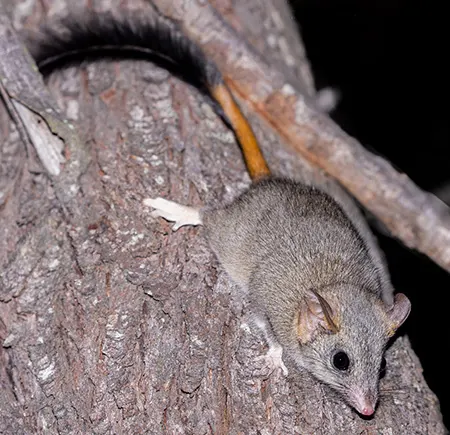
(Phascogale calura)
Red-tailed Phascogale
Туан червонохвостий
It is restricted to the southern part of the Western Australian Wheatbelt.
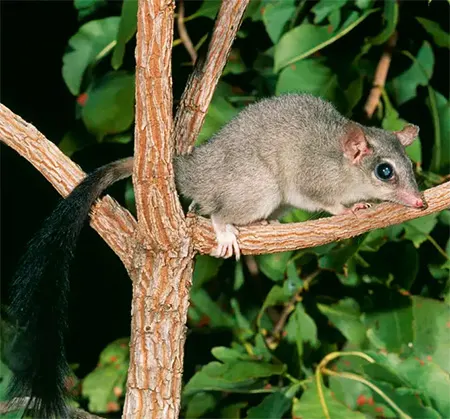
(Phascogale pirata)
Northern Brush-tailed Phascogale
Туан пухнастохвостий
It is found in the Northern Territory of Australia.
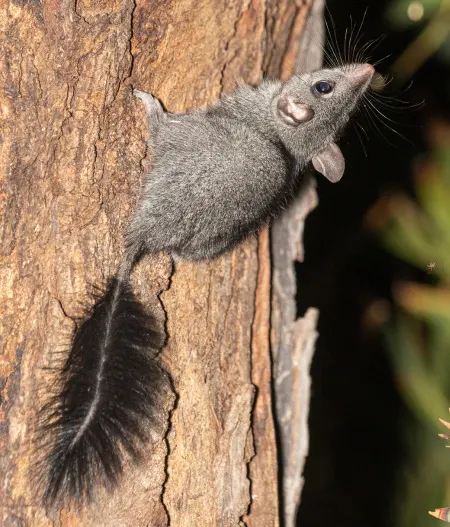
(Phascogale tapoatafa)
Brush-tailed Phascogale
Тафа
It is found patchily across south-western and north-western Western Australia, eastern Queensland, north-eastern New South Wales, and Victoria.
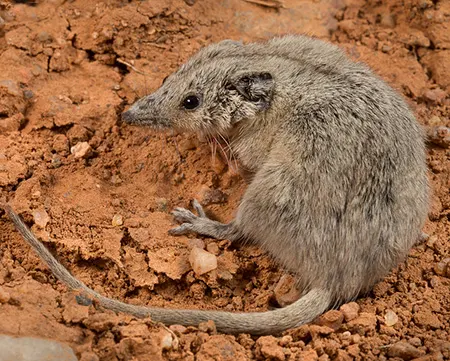
(Planigale gilesi)
Giles' Planigale
Планігал Гайлза
It is found in arid inland areas from Lake Eyre, South Australia, to Moree, New South Wales, and from Mildura, Victoria, to the south-western Northern Territory.

(Planigale ingrami)
Long-tailed Planigale
Планігал довгохвостий
It is found across northern Australia from the Pilbara through the Great Sandy Desert and the Kimberley region in Western Australia to the Barkly Tableland in the Northern Territory and Townsville in Queensland.
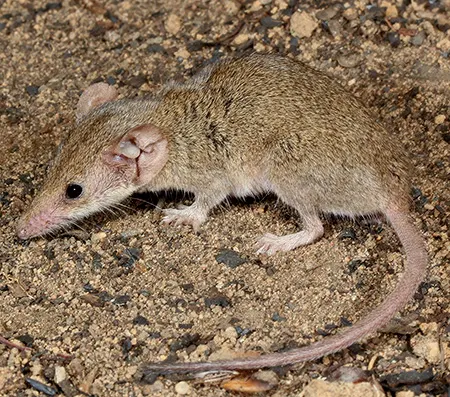
(Planigale maculata)
Common Planigale
Планігал звичайний
It is found from the upper Hunter River valley not far north of Sydney along the coast and hinterland to Cape York, and across the Top End of Australia to the Kimberley. It is also found on Groote Eylandt and on Great Keppel Island.
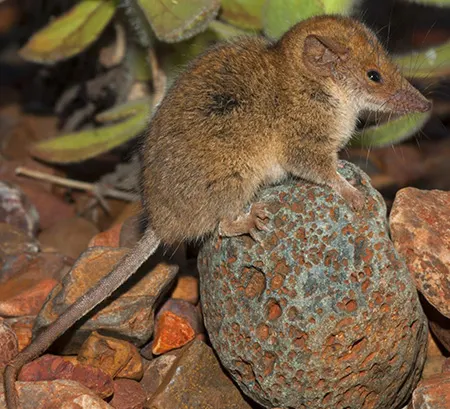
(Planigale kendricki)
Orange-headed Pilbara Planigale
Планігал рудоголовий
It lives in the Pilbara region of Western Australia.
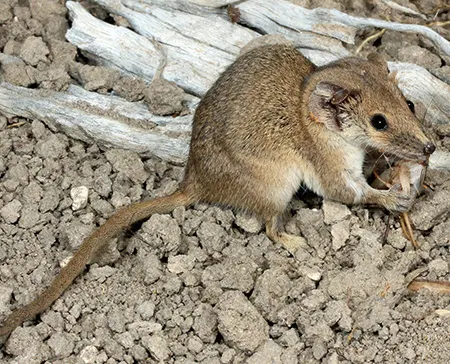
(Planigale tenuirostris)
Narrow-nosed Planigale
Планігал вузьконосий
It is found in New South Wales, Queensland, South Australia and the Northern Territory in a wide range of inland habitats. It prefers areas with cracked clay soil.
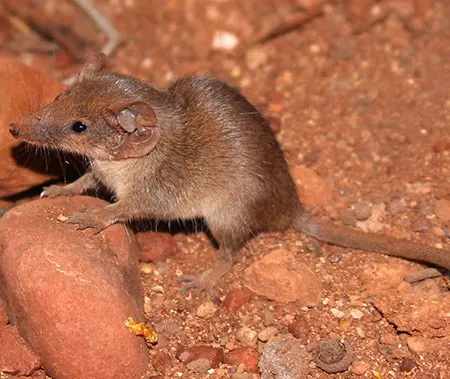
(Planigale tealei)
Cracking-clay Pilbara Planigale
Планігал Тіла
It lives in the Pilbara region of Western Australia.
The genus (Planigale) also includes: Papuan Planigale (Planigale novaeguineae).

(Ningaui ridei)
Wongai Ningaui
Вонгай
It lives mostly in the interior of Australia, on dunes or sandplains. The distribution range begins west of Kalgoorlie in Western Australia across northern South Australia and southern Northern Territory to southwestern Queensland.
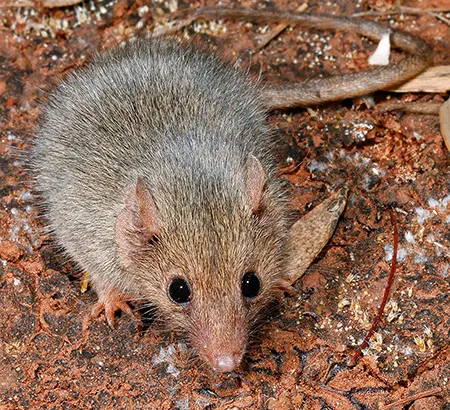
(Ningaui timealeyi)
Pilbara Ningaui
Західний нінгай
It is found in the Pilbara and Gascoyne regions of Western Australia, extending into the Little Sandy Desert.
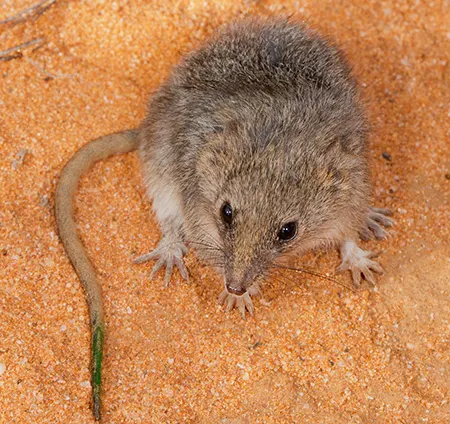
(Ningaui yvonneae)
Southern Ningaui
Південний нінгай
It is found in the Lake Cronin region, in South Australia and Victoria (the Big Desert, Sunset Country, and Annuello), and further east on the continent at Round Hill in New South Wales.
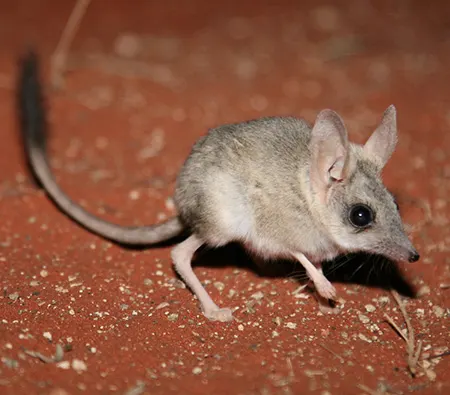
(Antechinomys laniger)
Kultarr
Култарр
It is found in the Northern Territory and Western Australia, with populations around Cobar in western New South Wales that continue to persist.
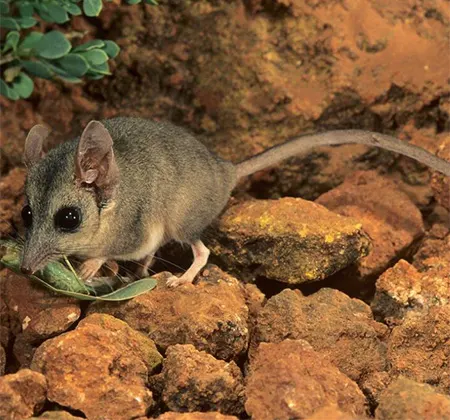
(Antechinomys longicaudatus)
Long-tailed Dunnart
Сумчаста миша довгохвоста
It is found in Western Australia, from the Pilbara and eastern coast to the north-eastern Goldfields and Gibson Desert (Young Ranges), extending south to the Nullarbor Plain and into central Northern Territory and western South Australia.
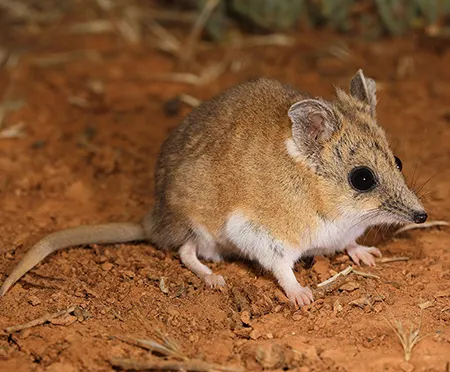
(Sminthopsis crassicaudata)
Fat-tailed Dunnart
Сумчаста миша жирнохвоста
It is found in the less arid regions of Western Australia, Queensland, South Australia, New South Wales, and Victoria.
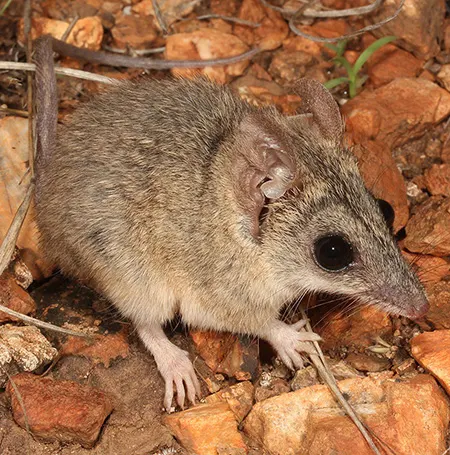
(Sminthopsis bindi)
Kakadu Dunnart
Сумчаста миша Какаду
It lives near the Top End of the Northern Territory of Australia around the Kakadu National Park. It prefers a habitat of stony woodlands on a hilly geography.
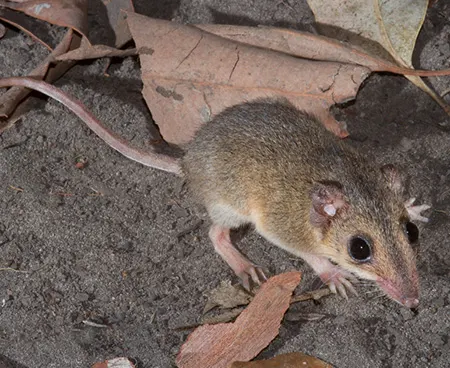
(Sminthopsis butleri)
Carpentarian Dunnart
Сумчаста миша Батлера
It is found in the Northern Kimberley’s near Kalumburu in Western Australia and Bathurst and Melville Island in the Northern Territory.
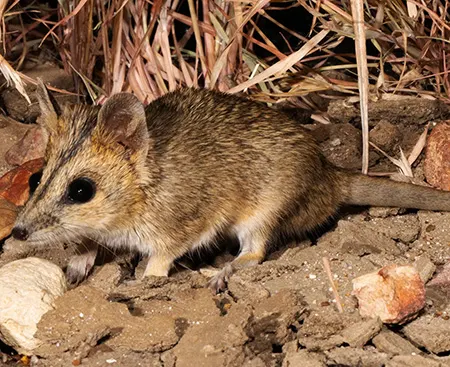
(Sminthopsis douglasi)
Julia Creek Dunnart
Сумчаста миша Дугласа
It is found on 8,000 km2 in the Mitchel Grass downs of riparian grasslands, between Julia Creek and Richmond in Queensland, it possibly occurs in the Mitchell Plateau of Western Australia.
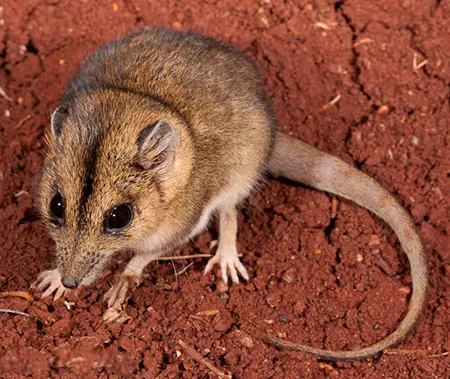
(Sminthopsis macroura)
Stripe-faced Dunnart
Сумчаста миша смугастоморда
Its distribution covers a broad area of central and northern Australia, from the Pilbara through central Northern Territory and western and central Queensland, extending south to north-eastern South Australia and north-western New South Wales.
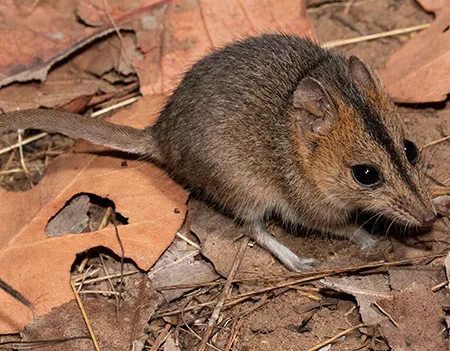
(Sminthopsis virginiae)
Red-cheeked Dunnart
Сумчаста миша червонощока
It is found in Australia (northern Western Australia, north-eastern Queensland, and the Northern Territory including the Tiwi Islands), the Aru Islands, and southern New Guinea.
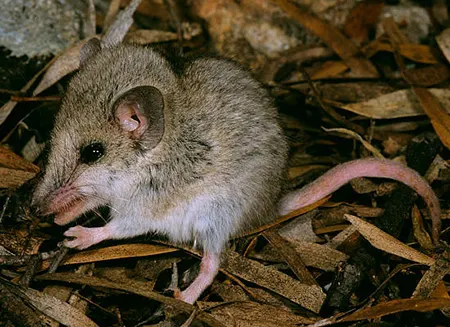
(Sminthopsis granulipes)
White-tailed Dunnart
Сумчаста миша білохвоста
It occupies two separate areas in Western Australia. The first is east of Perth in the western Goldfields area and the second is to the north of Perth between Kalbarri and Jurien Bay.

(Sminthopsis archeri)
Chestnut Dunnart
Сумчаста миша каштанова
There are a handful of records known from southern Papua New Guinea and in Australia on the east and west coasts of Cape York Peninsula, with one record at Blackbraes National Park west of Townsville.
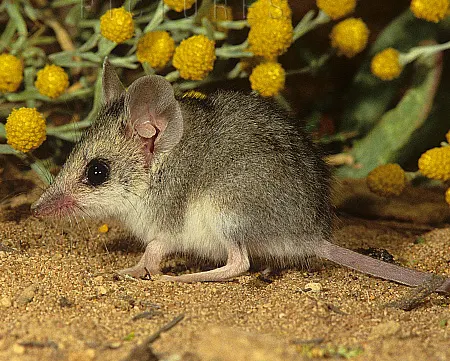
(Sminthopsis dolichura)
Little Long-tailed Dunnart
Сумчаста миша мала довгохвоста
This species occupies two separate regions. In Western Australia, it is found in the northern Goldfields, the Geraldton hinterland, the north-west and south-west coasts, and the western plateau. In South Australia, it occurs along the coastal areas of the Great Australian Bight on the Nullarbor Plain and the Eyre Peninsula, west of Port Augusta.

(Sminthopsis fuliginosa)
Gray-bellied Dunnart
Сумчаста миша сірочерева
It is found in Western Australia along the south-western coastal fringes and associated ranges, from the Gairdner Ranges in the north, southwards to Cape Arid National Park in the east. It is also present on Kangaroo Island in South Australia.
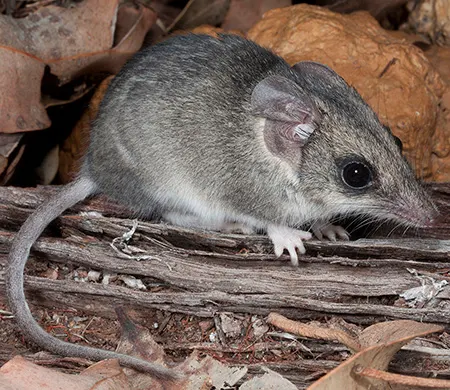
(Sminthopsis gilberti)
Gilbert's Dunnart
Сумчаста миша Гілберта
It is found in the southern wheat belt of Western Australia close to Perth and the Swan River, as well as the Roe plain near the South Australian border.
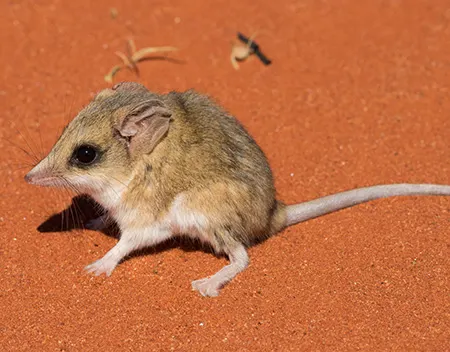
(Sminthopsis hirtipes)
Hairy-footed Dunnart
Сумчаста миша волохатонога
It inhabits three distinct areas; around Monkey Mia Bay and Kilbarri in Western Australia, a large area where the border of South Australia, Northern Territory and Western Australia converge and a small area between the Northern Territory and Queensland border 100 km north of the South Australian border.
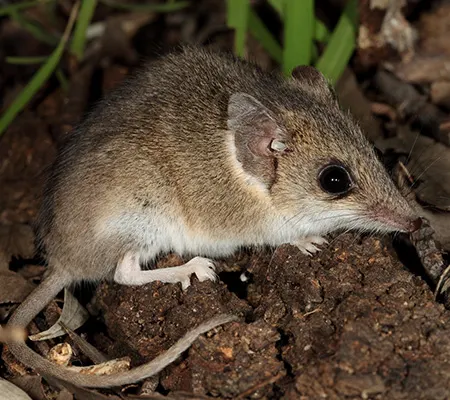
(Sminthopsis murina)
Slender-tailed Dunnart
Сумчаста миша тонкохвоста
It is native to the eastern and south-eastern coasts and interior of Australia, ranging from the Cape York Peninsula in Queensland to the Port Lincoln area in South Australia.

(Sminthopsis ooldea)
Ooldea Dunnart
Сумчаста миша Тротона
It is found from the Tanami Desert in the Northern Territory, south to Ooldea in South Australia and east to neighbouring areas of Western Australia.
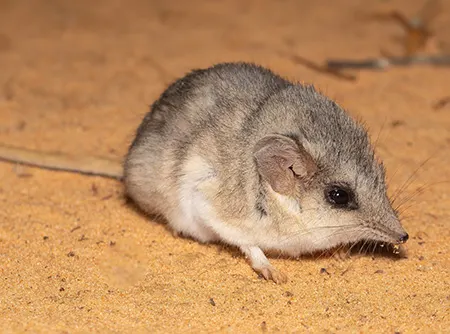
(Sminthopsis psammophila)
Sandhill Dunnart
Сумчаста миша піщана
It is known from four scattered semi-arid areas of Australia: near Lake Amadeus in Northern Territory, the central and eastern Eyre Peninsula in South Australia, the south-western and western edges of the Great Victoria Desert in Western Australia, and at Yellabinna in South Australia.
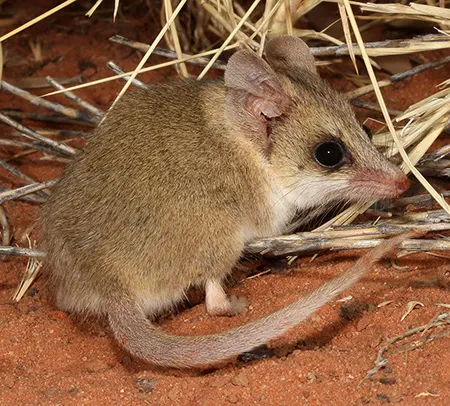
(Sminthopsis youngsoni)
Lesser Hairy-footed Dunnart
Сумчаста миша мала волохатонога
It is found in many desert areas of Western Australia, Northern Territory and Queensland.
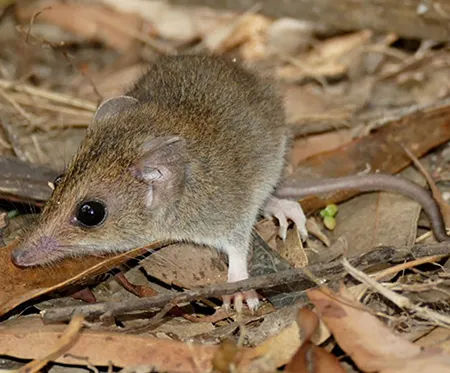
(Sminthopsis leucopus)
White-footed Dunnart
Сумчаста миша білонога
It is found in north-eastern Queensland, south-western New South Wales, southern Victoria, and Tasmania.
The genus (Sminthopsis) also includes: Froggatt’s Dunnart (Sminthopsis froggatti), Stalker’s Dunnart (Sminthopsis stalkeri).
